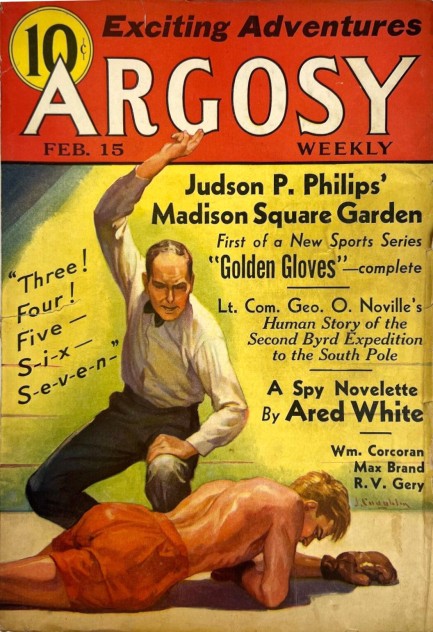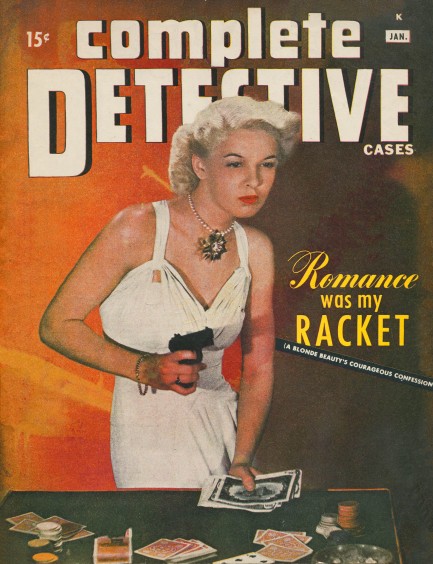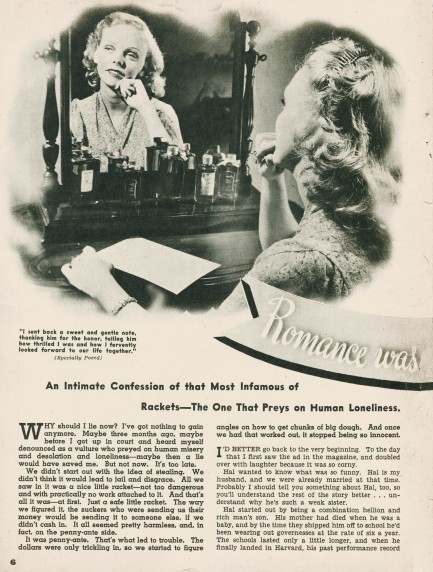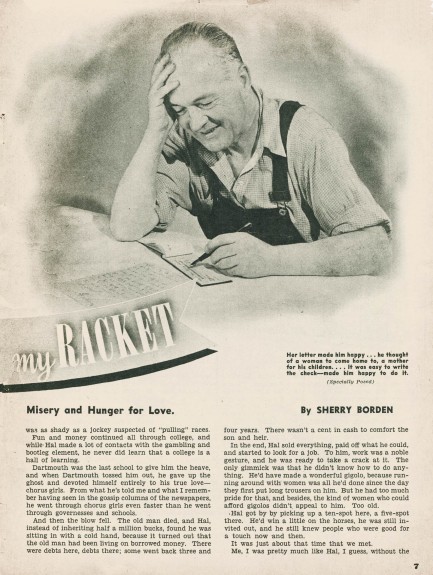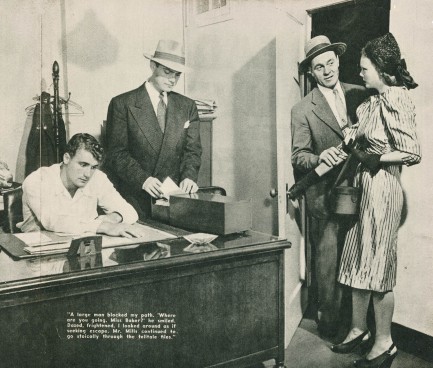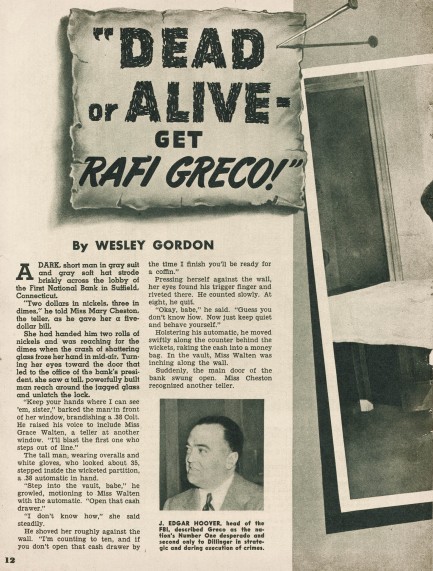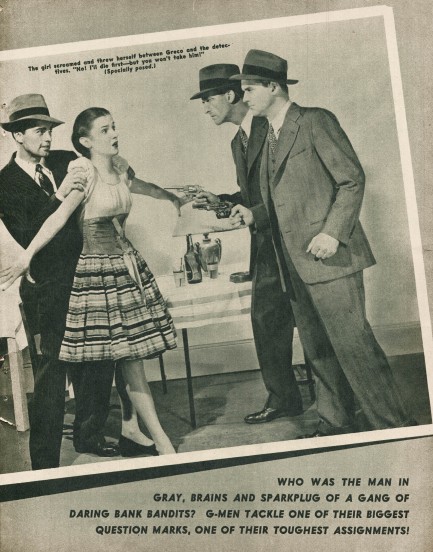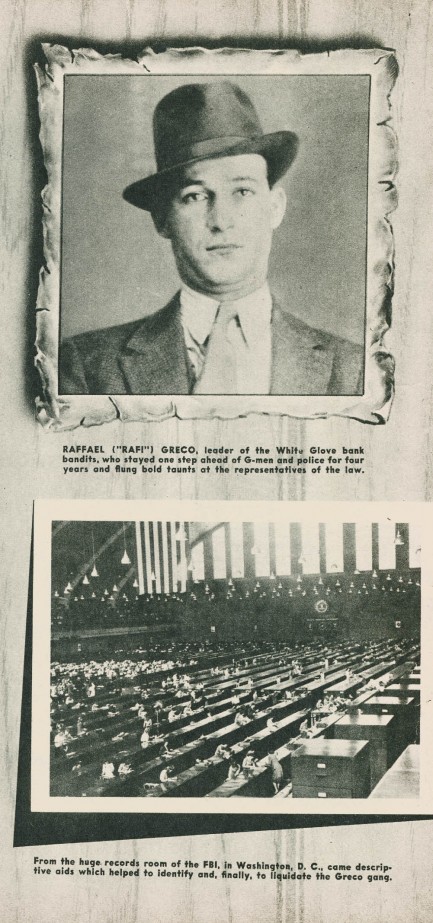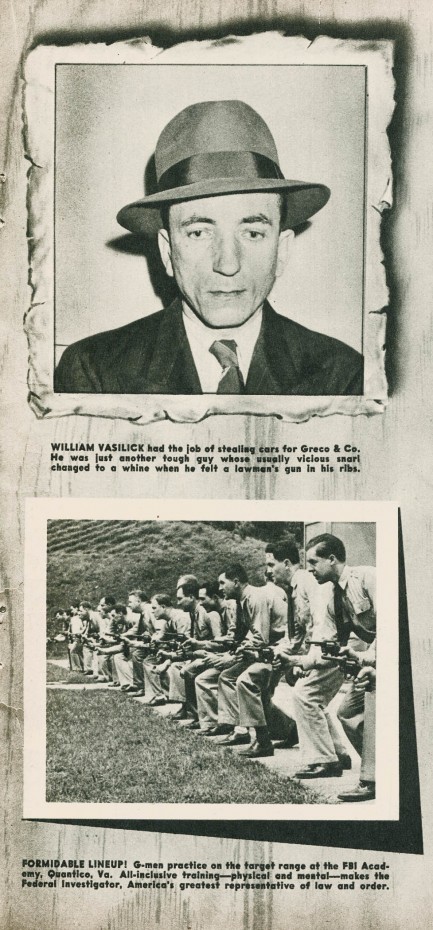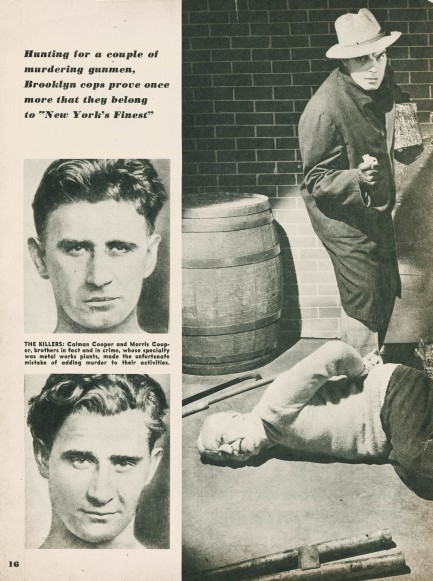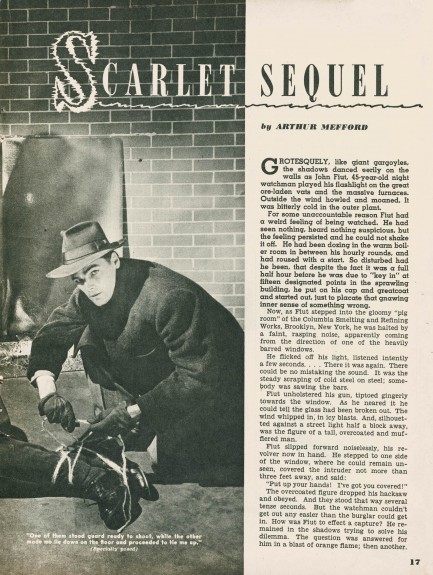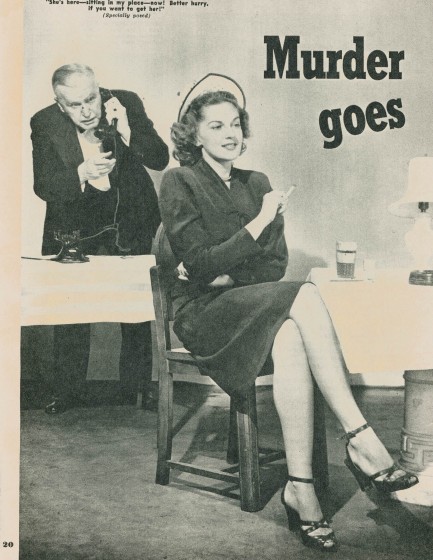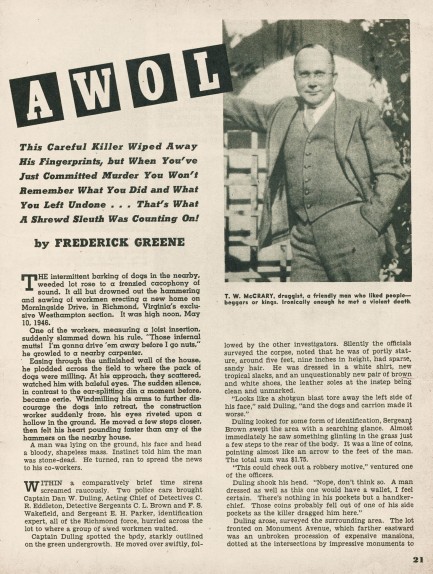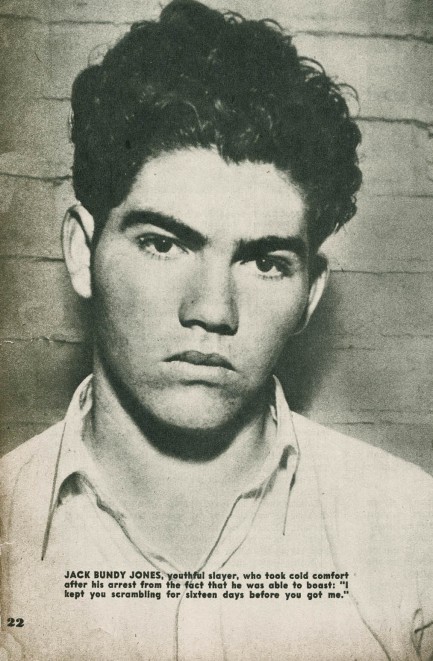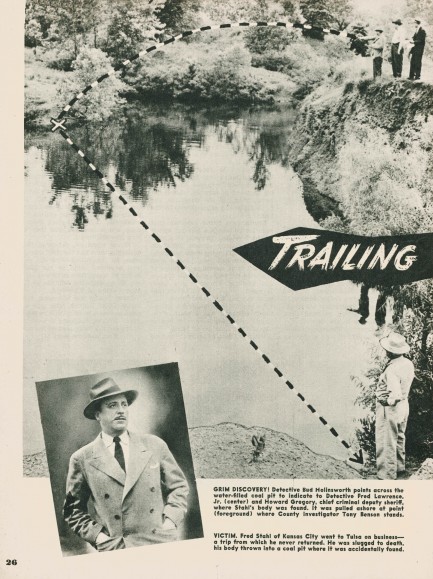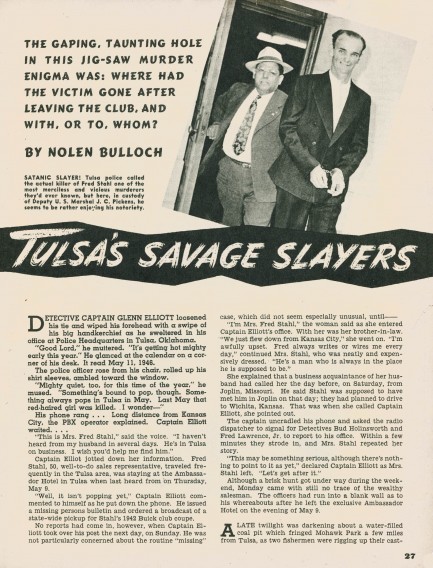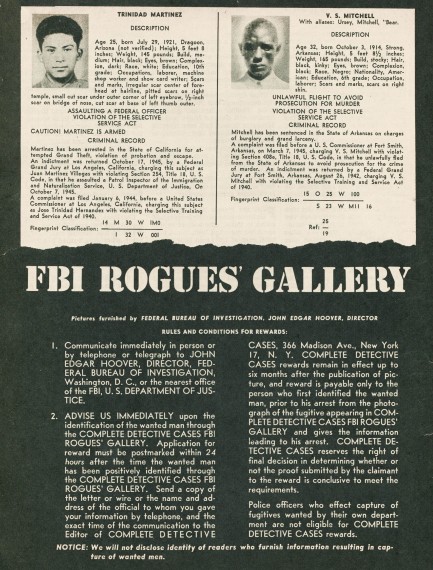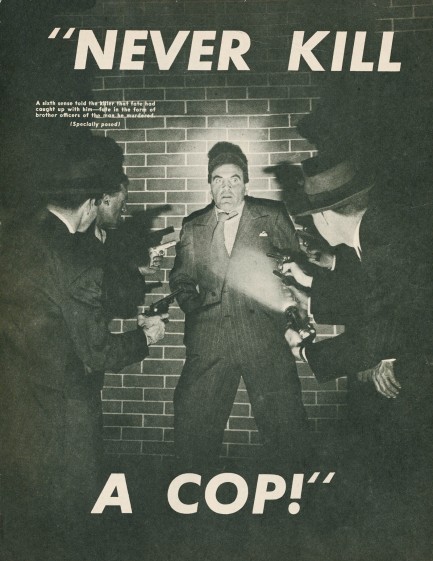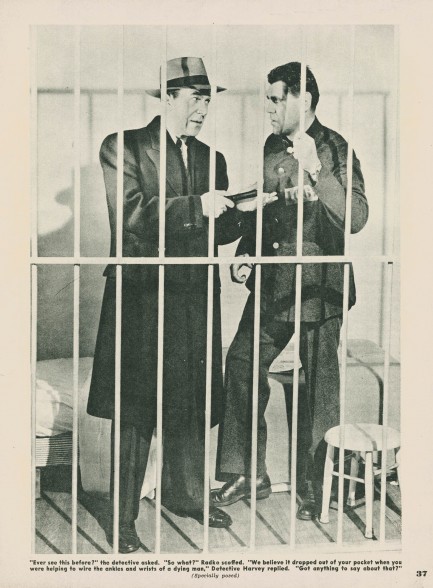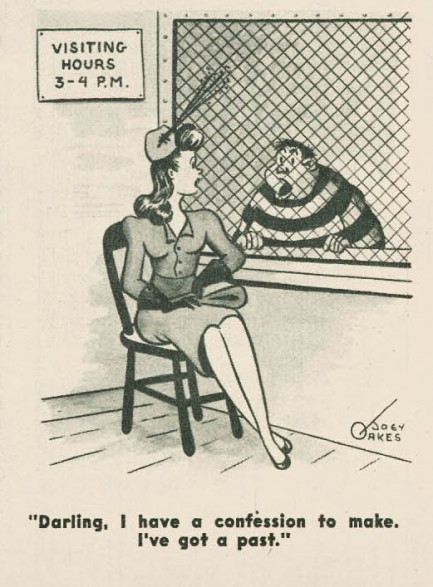 Infancy, adulthood, and death in twenty-four years. 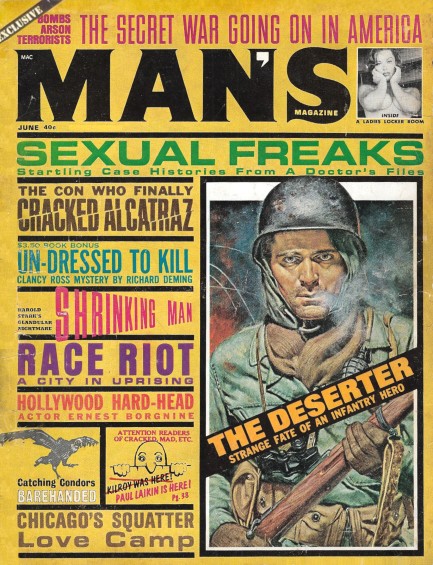
This issue of Man's Magazine hit newsstands this month in 1963 with Mel Crair cover art we suspect is cropped from a larger piece. In the past the magazine had featured paintings that occupied its entire front, but by this time it was experimenting with a tabloid look, giving more space to blocked text with sensational messaging, and reducing the dimensions of art acquired from Crair and others. More cover changes would come. From fully painted fronts, to the tabloid style you see here, it shifted to photo covers, which happened in 1969 and saw cheesecake and adventure imagery alternating, until the early ’70s when cheesecake took over and adventure was relegated entirely to the interior. Man's Magazine was by that point publishing nude and semi-nude women on all its covers. Other men's adventure magazines were doing the same.
This shift happened quickly, but had been in the wind for a long time. Private publications had crossed all red lines much earlier, though they hadn't been openly available. Producing and selling them was to risk prison. But it was understood that men wanted more eroticism, wanted it at high quality, and would buy it even if it wasn't behind the fig leaves of art and literature. However, art and literature were needed in above-ground publications because they helped avoid obscenity convictions. Otherwise, erotic content had no “redeeming qualities,” and legal troubles were guaranteed. Mainstream men's publications were largely articles, fiction, and cartoons for that reason—and to attract advertisers.
Man's Magazine had launched in 1952 and operated in reasonable health for at least fifteen years. But by the mid-1960s social repression and censorship were in retreat. Language was changing. Racier novels could be published without legal concerns, and more revealing cinematic content was possible. In the magazine realm, brands that foregrounded women's nudity more than previously were prospering. The erotic but coy Modern Man had launched in 1951. Playboy had arrived in 1954 and been willing to push the standards of what was possible. Penthouse arrived in the UK in 1965, in the U.S. in 1969, and began to show pubic hair. When Hustler arrived in 1974 the floodgates weren't just open, suddenly, but gaping.
Man's Magazine is a classic example of a publication that was swept away by all that change, but refused to go down without a fight. Its attempts to adapt failed and it folded in 1976. Interestingly, by the end, during the latter half of that year, it moved to personality covers. Cover stars included Richard M. Nixon, Muhammad Ali, and even Paul McCartney and Larry Csonka. We don't know what prompted that move—a final attempt to appear more highbrow, perhaps? We haven't bought any of those last gasp issues to seek clues, but nothing could help Man's Magazine retain market share in a landscape that featured publications with more nudity and gloss.
But it wasn't only explicitness and printing quality that pushed Man's Magazine and its ilk slowly off newsstands. With their tighter operating budgets when compared with Playboy and cohort, they generally had lower quality fiction, profiles, essays, and cartoons. By contrast Playboy would eventually interview some of the most important people in the world, and its fiction would feature the most acclaimed authors. Man's Magazine never had a prayer of keeping pace. But today's issue appeared before the decline. There's fiction from the well known Richard Deming, non-fiction by the respected Richard Hardwick, and many excellent illustrations. All of that and more are below. 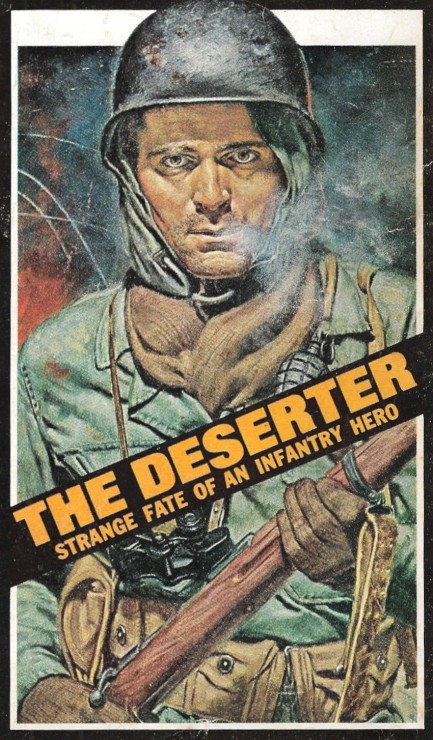 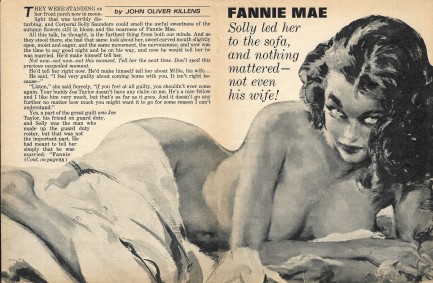 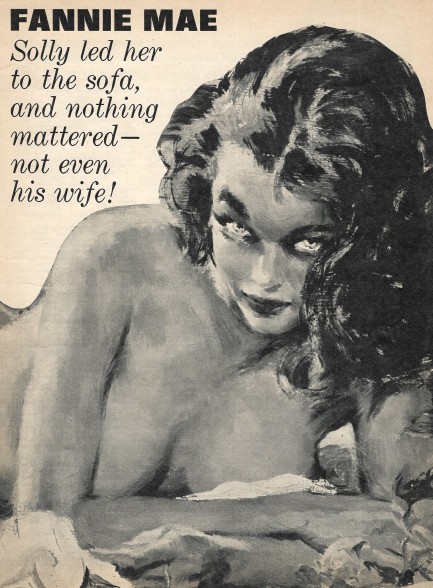 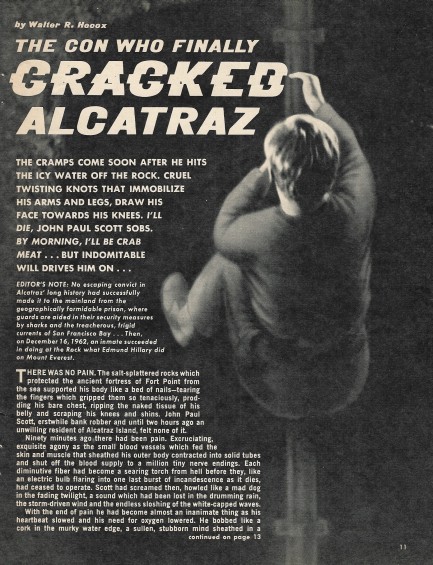 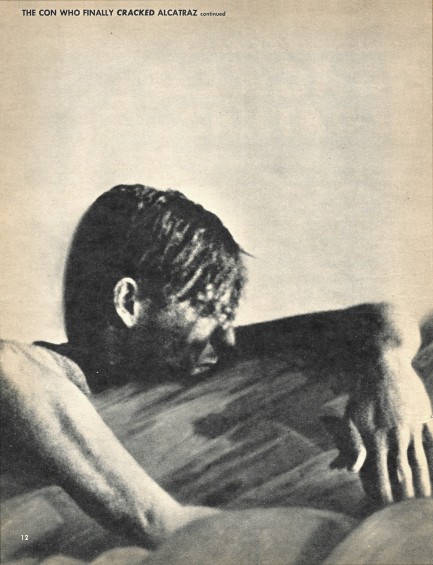 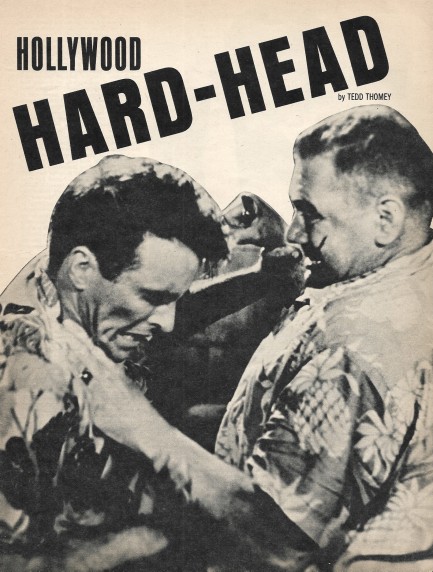 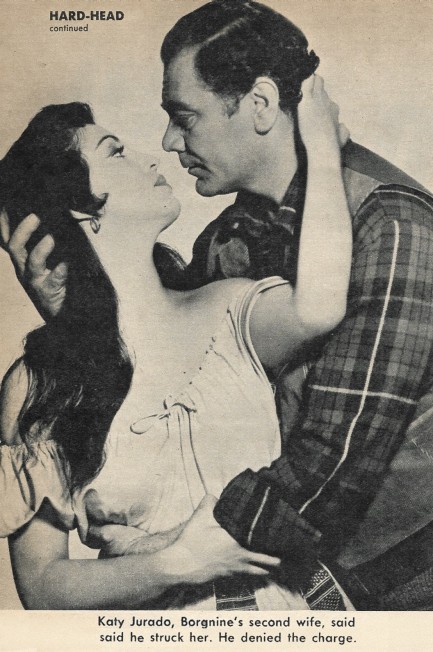 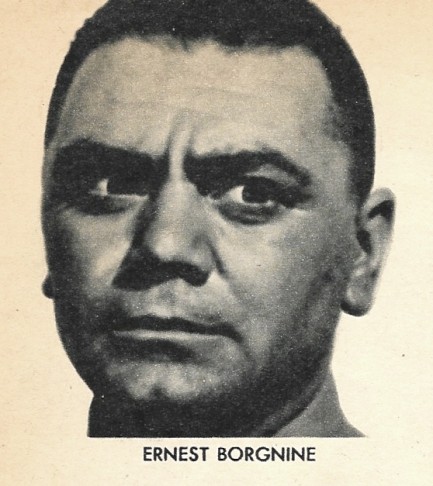 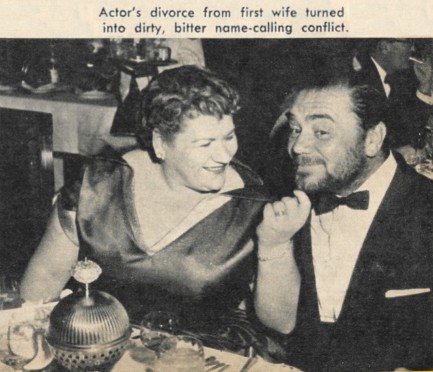 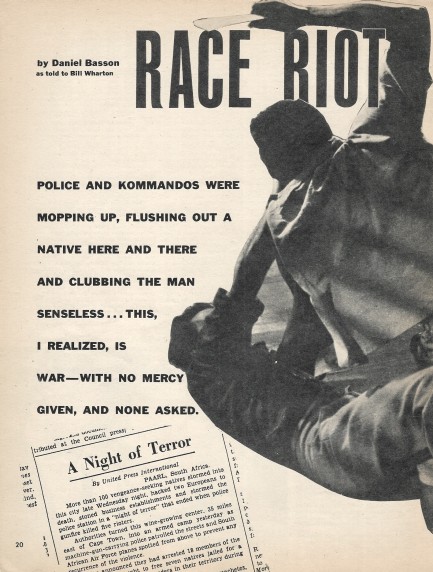 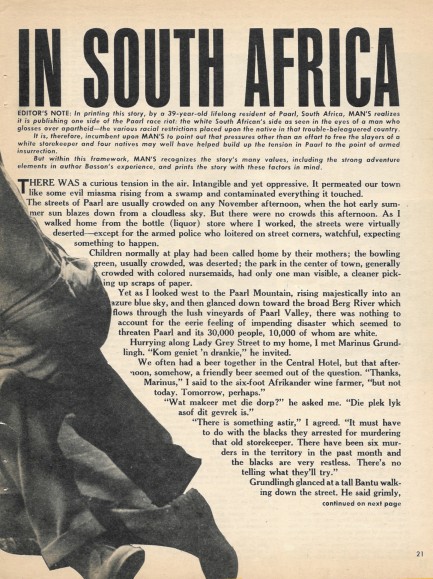 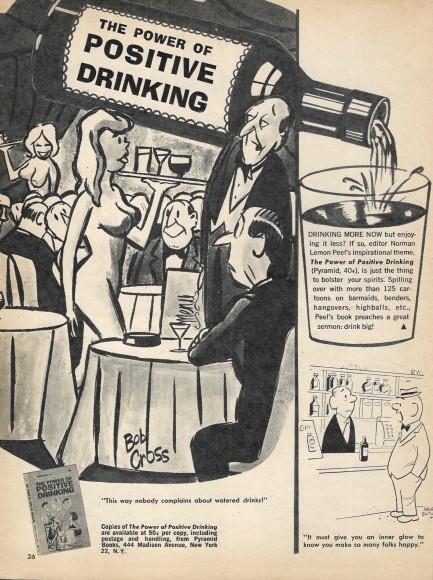 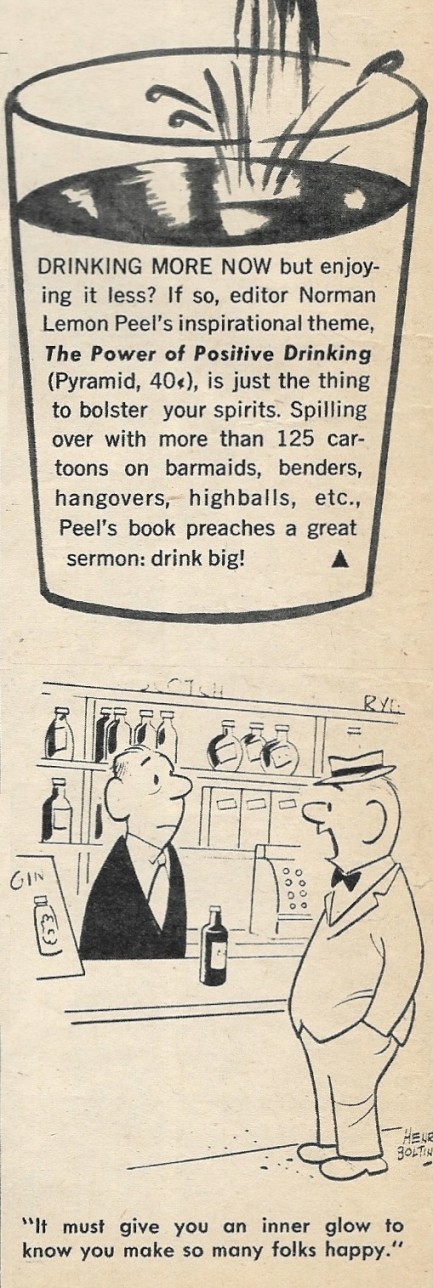 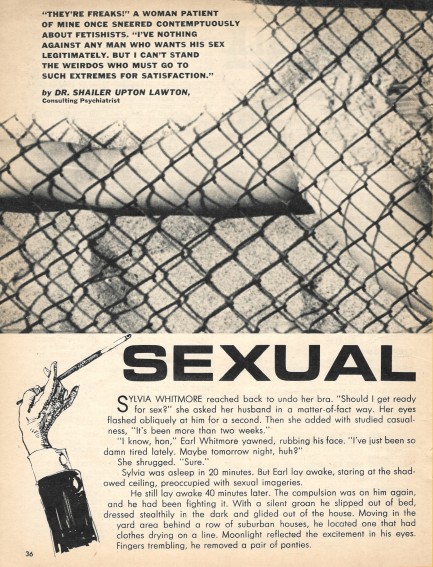 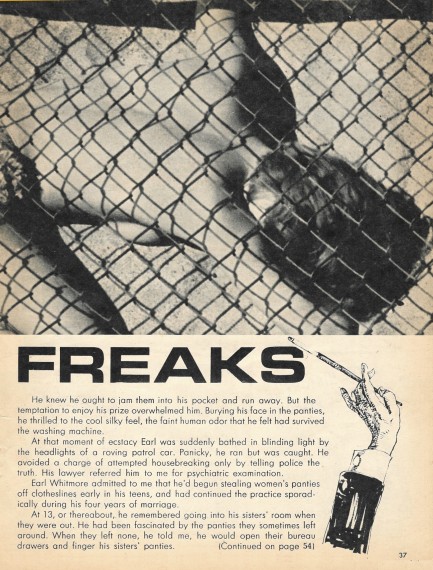 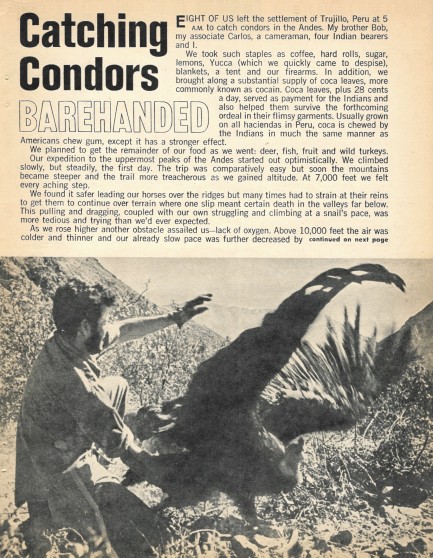 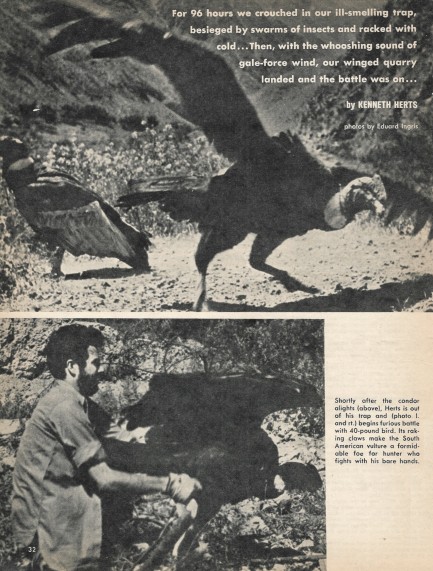 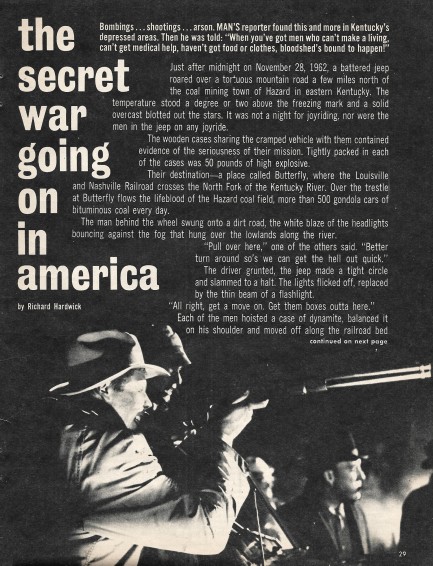 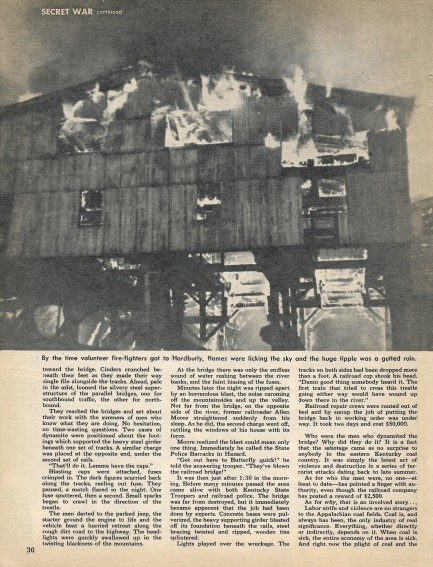 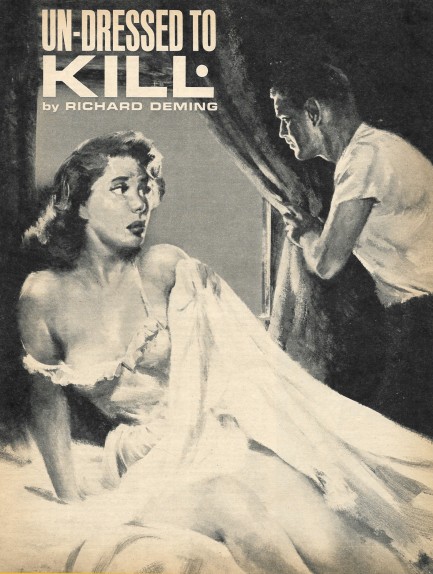 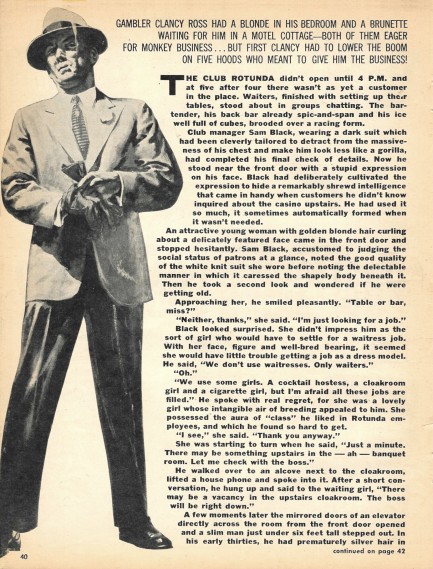  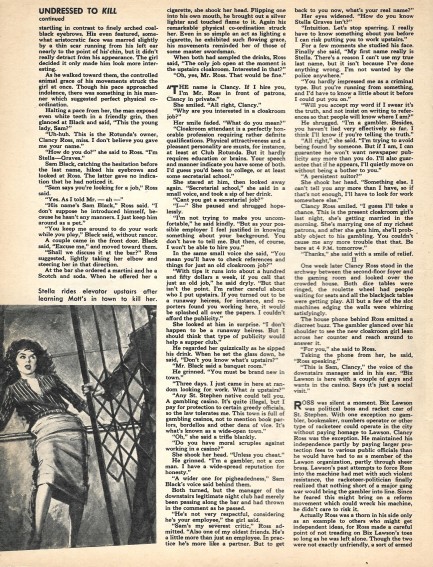 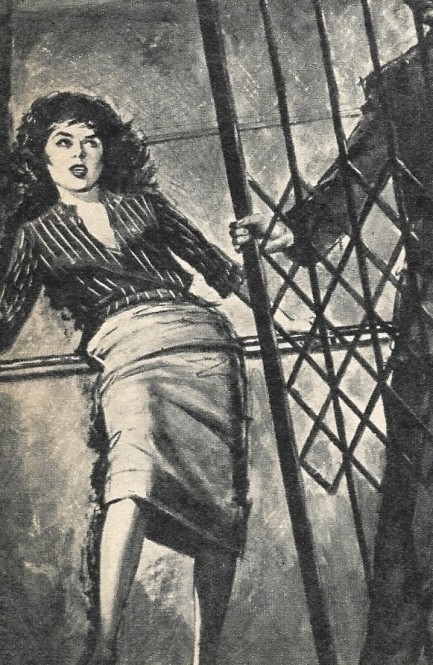 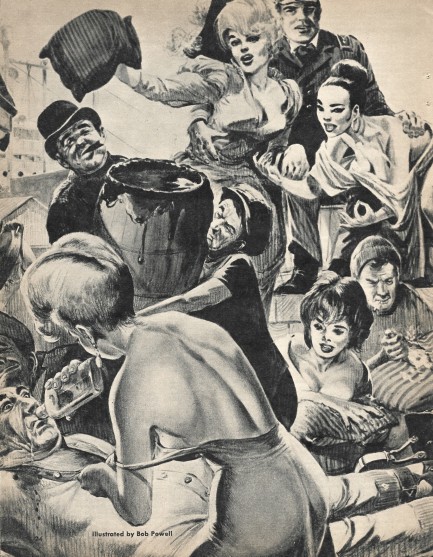 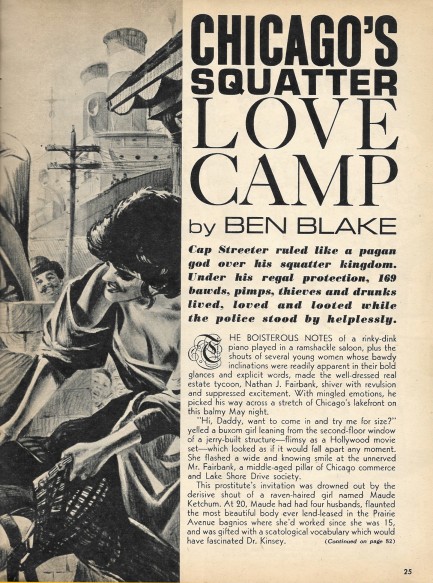
 Get outta the frickin' way you lunatic! Are you out of your goddamned— Oh. I mean... need a lift? 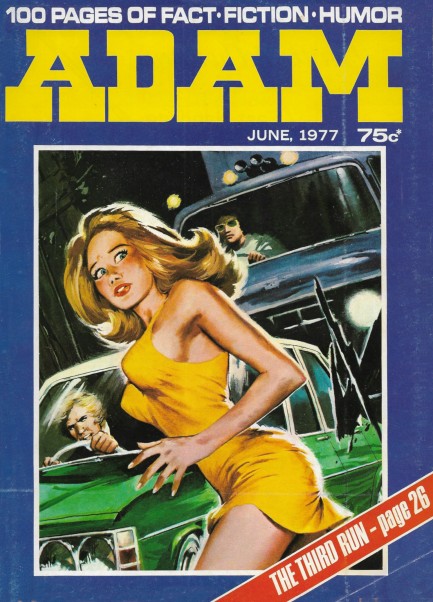
We're going back-to-back with Adam magazine. We posted one yesterday, but we have another because, despite the fact that this is the eighty-sixth issue we're sharing, we have a stack yay high we still need to get to. At this point we'll make the claim—without any proof whatsoever, but hey, that just means we're in step with the times—that we have more copies of Adam under our roof than any other place in the world. Prove us wrong. It's all the more impressive considering we don't live in Australia, where the magazine originates, and have needed to ship them wherever we were living at the time, currently (and permanently?) Spain.
Today's issue from this month in 1977 has the slightly more streamlined look the magazine moved toward as it approached its mid-1978 dissolution. The cover illustrates Jay Ruth's story “The Third Run.” We were eager to learn why the femme fatale crossed the road. It wasn't to get to the other side. She was trying to keep from being flattened, and not in the road as we assumed, but in a warehouse. In the story, she's part of a truck hijacking ring, and to her misfortune, she chooses as her newest victim an undercover operative posing as a truck driver. He'd been out there hoping to lure the hijackers, and on his third run he did. It's a pretty good story.
It wouldn't be an issue of Adam without models, and you get plenty here. By 1977 it was go full frontal to survive in the men's mag market or quit, and Adam quit—though resisting the shift to porn was probably only one of many considerations (moving to color and glossy page stock were probably others) However, though Adam never went all the way, one of the models wearing a bikini shows a bit of overflow bush and a treasure trail. Many times with later issues of Adam we're able to identify a model or two, but all the ones here are unknown to us. We're especially intrigued by the woman on the title page, with her short-shorts, superhero boots, and spectacular hair. Seems like, given the crucial masthead position, we should know who she is, but no such luck.
As a side note, we got an e-mail about our scans recently, another request for larger dimensions. We don't have the capability to do that easily, do to our website's design. We did offer a large scan once, a while back, for something special, but it was one image, not dozens. We couldn't even begin to do it for multiple images. Really, we're glad it's beyond the realm of practicality to change our scan sizes—for reasons already stated. But hey, at least we have a lot of them. Forty-plus panels worth, below. Please enjoy. Edit: the mystery woman is Minah Bird, a Nigerian born model and bit-part actress, whose onscreen credits include The Stud, Old Dracula and Four Dimensions of Greta.
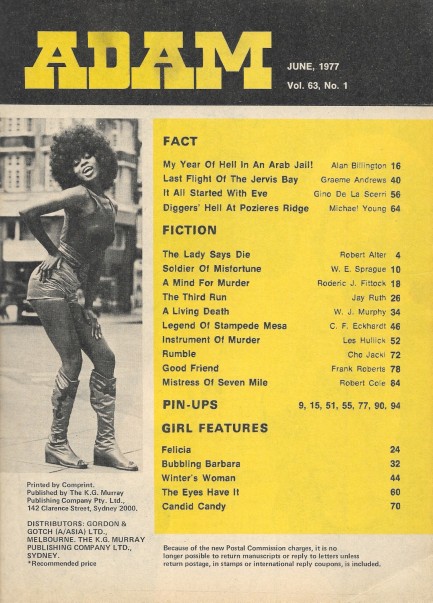 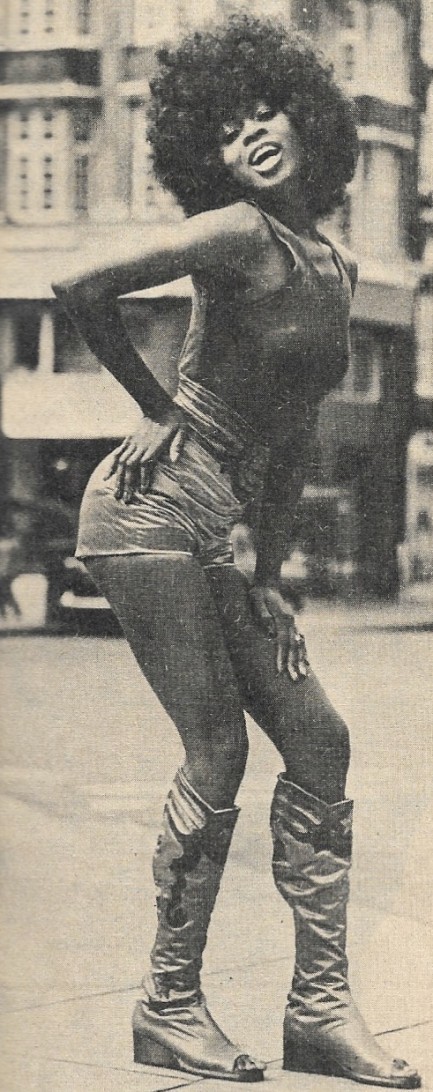  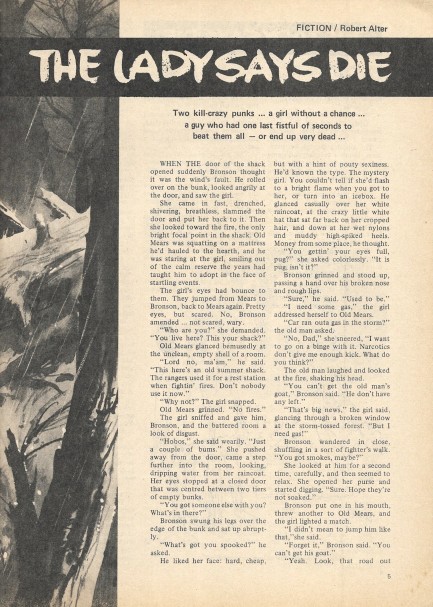 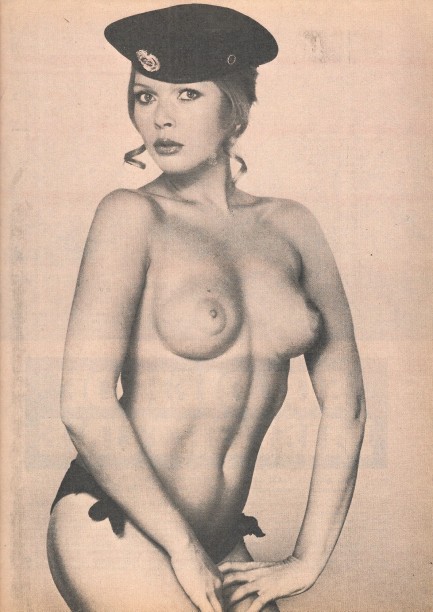  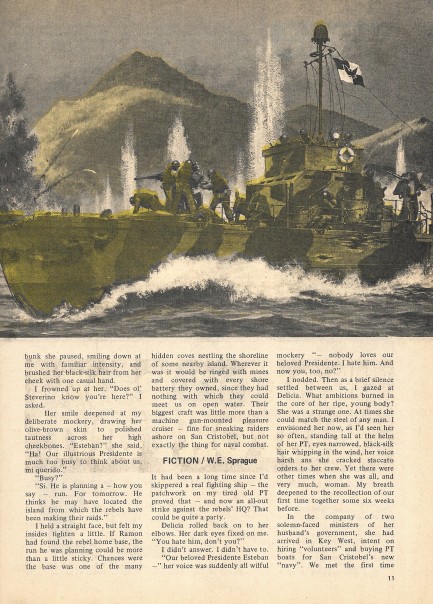 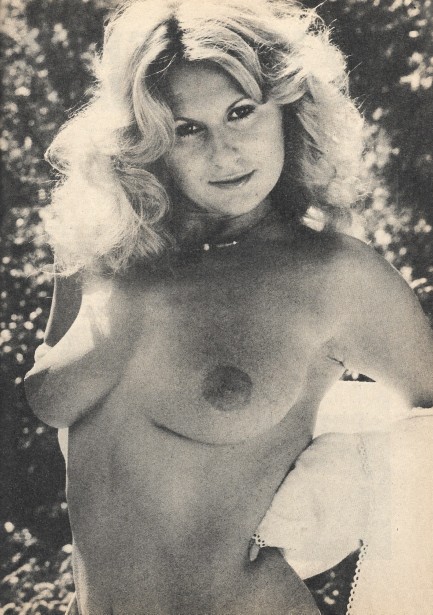 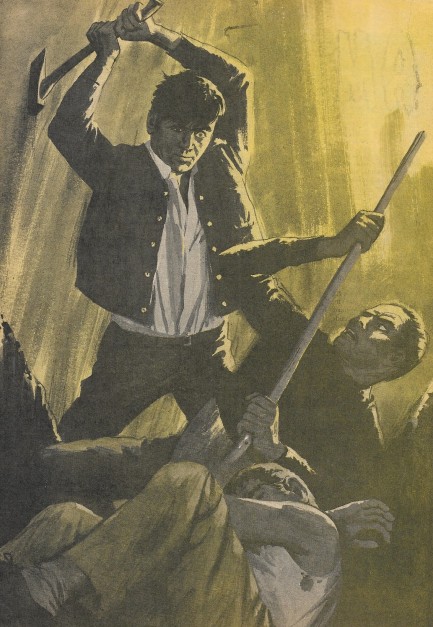 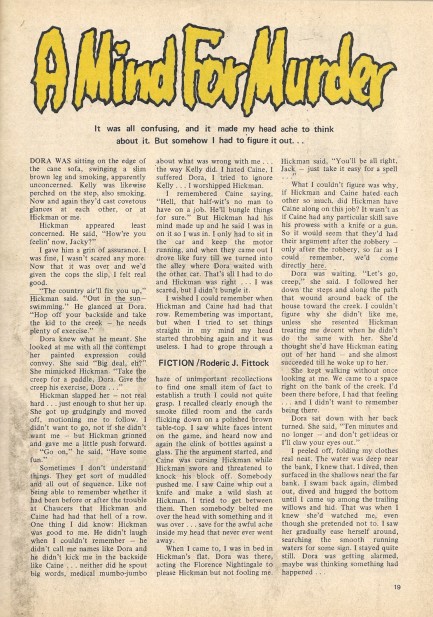 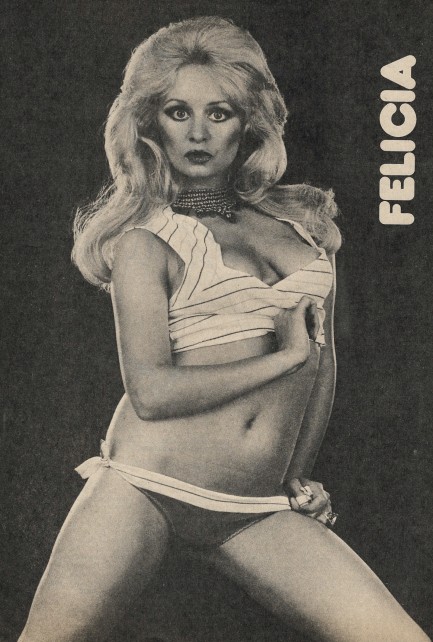 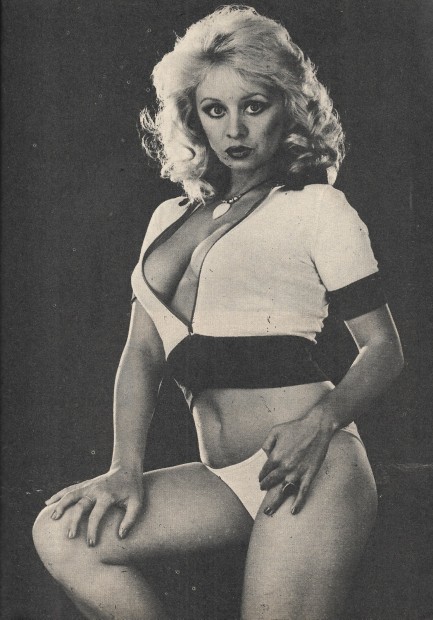 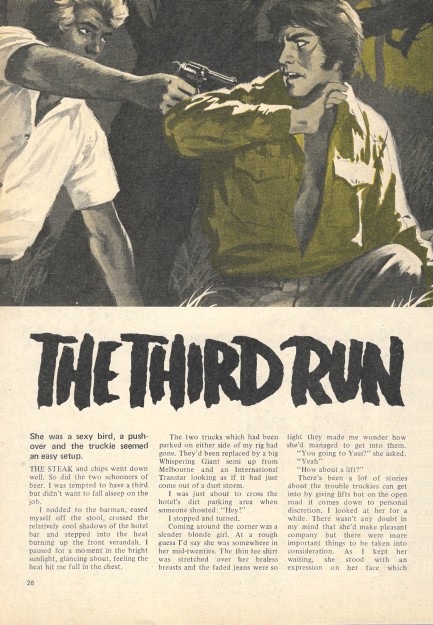 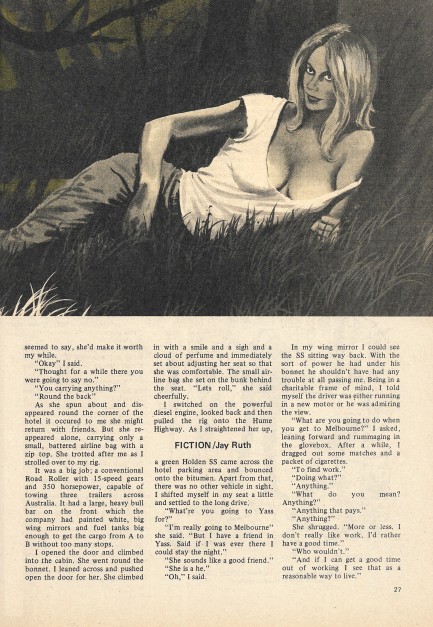 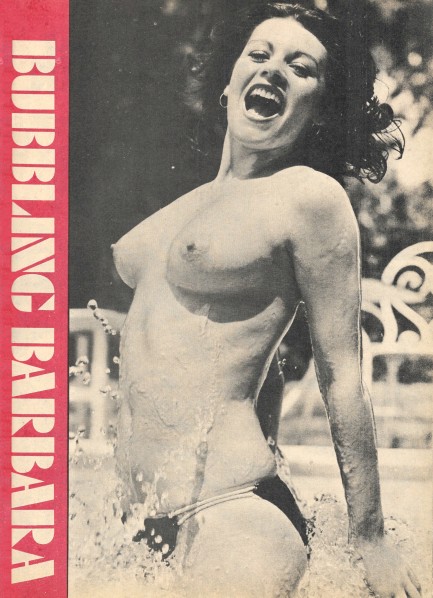 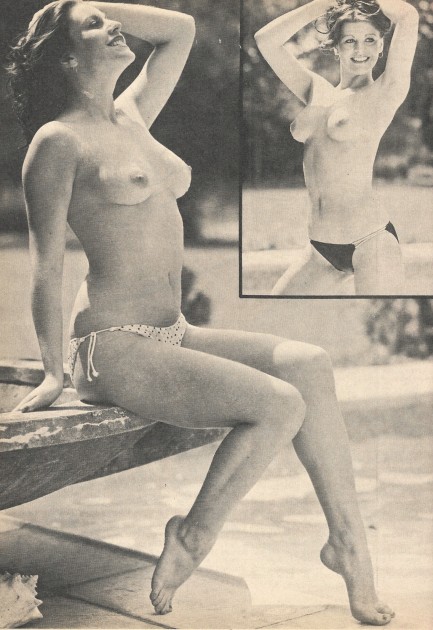 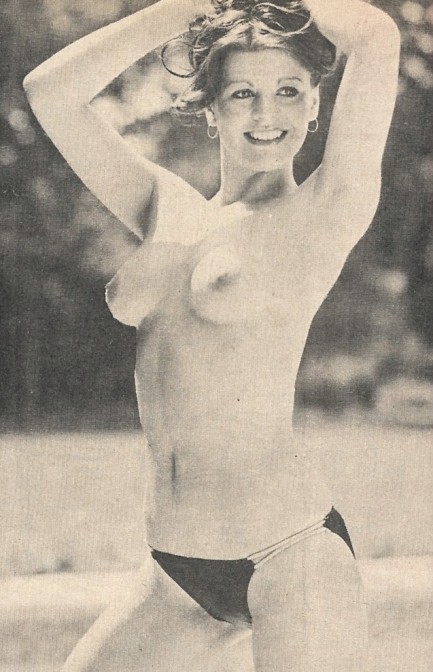 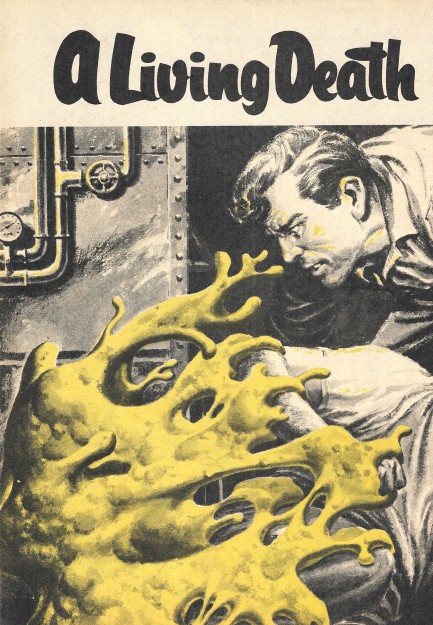 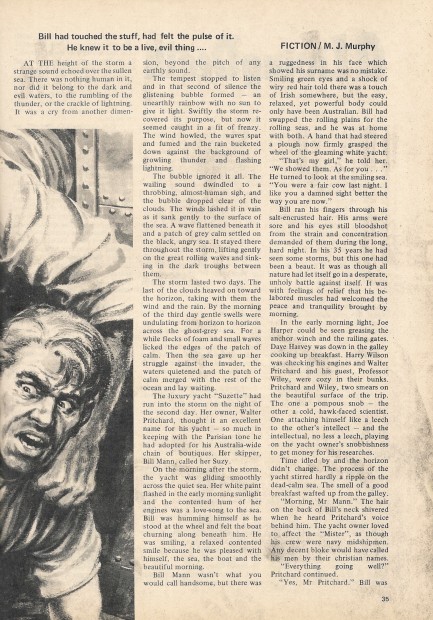 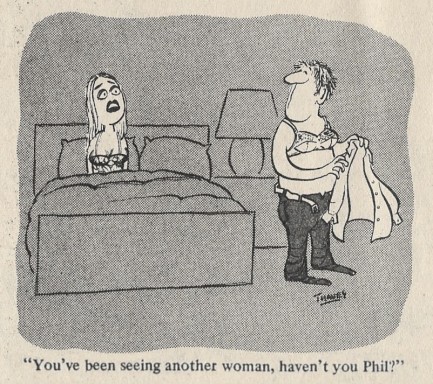  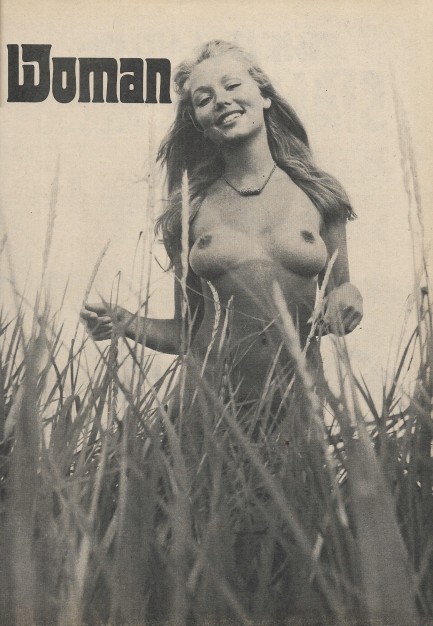 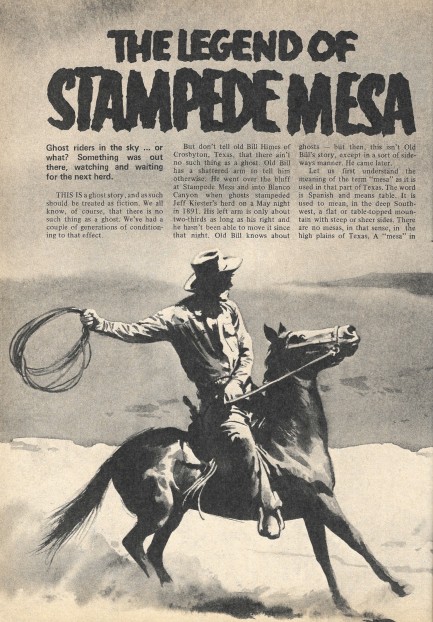 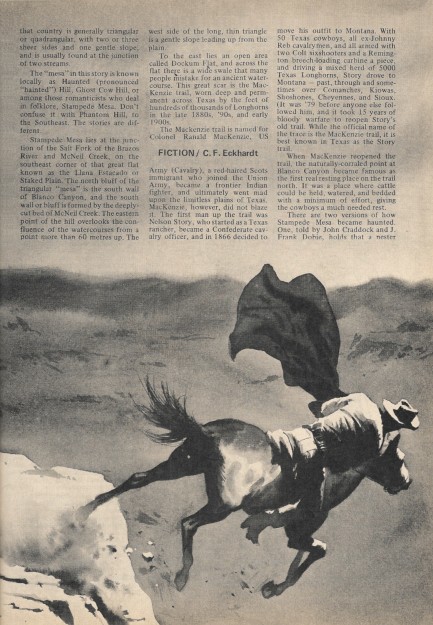 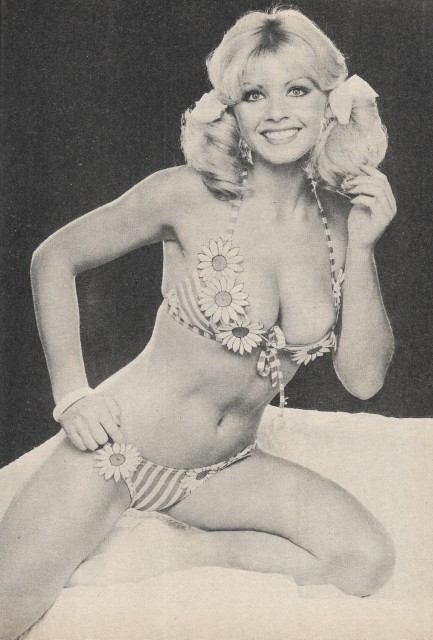 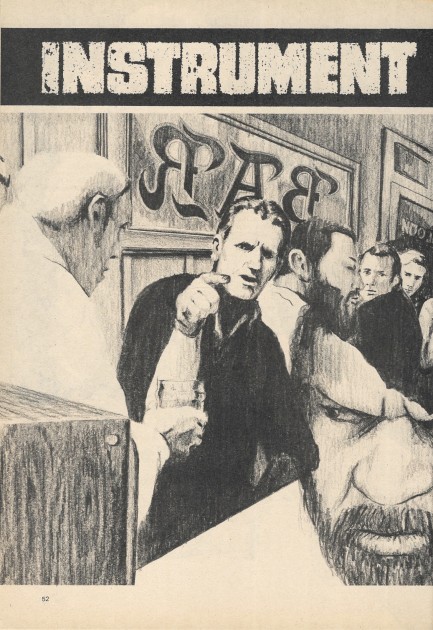 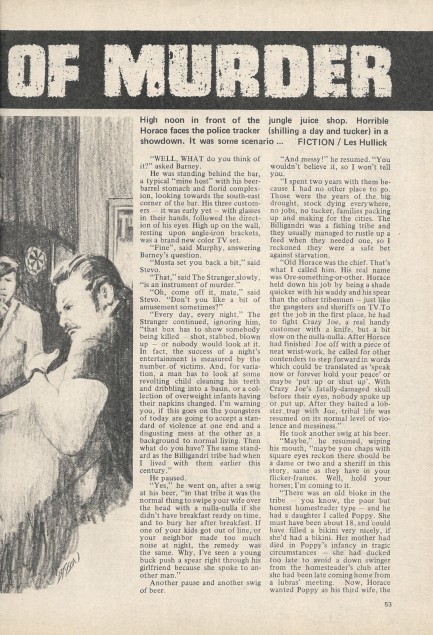 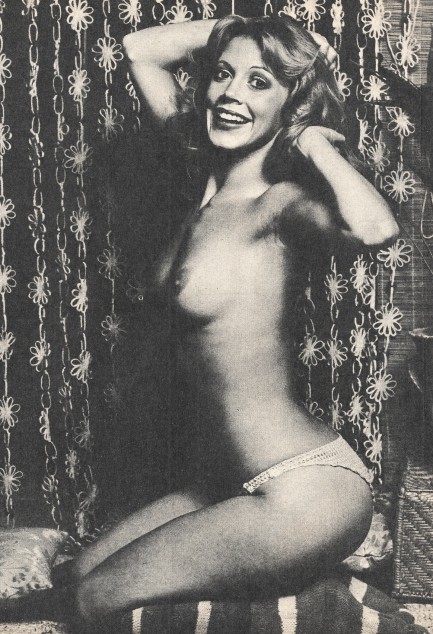 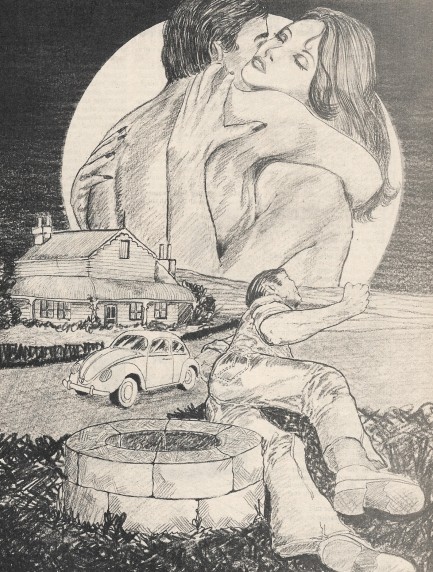    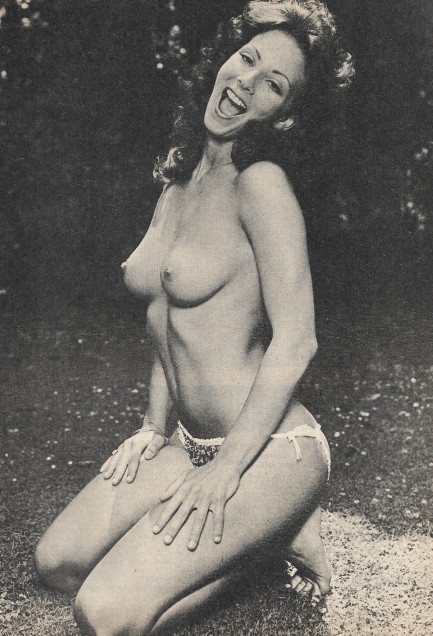 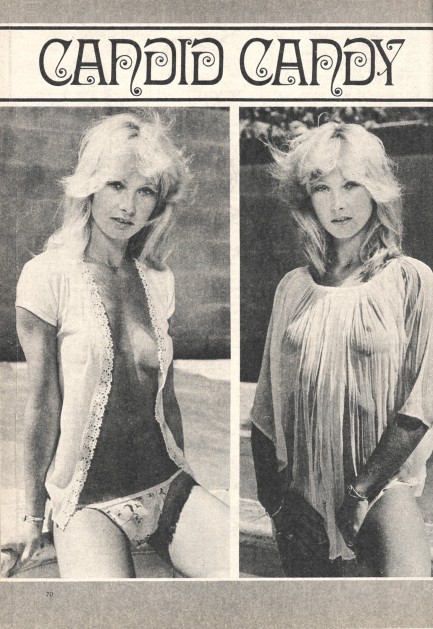 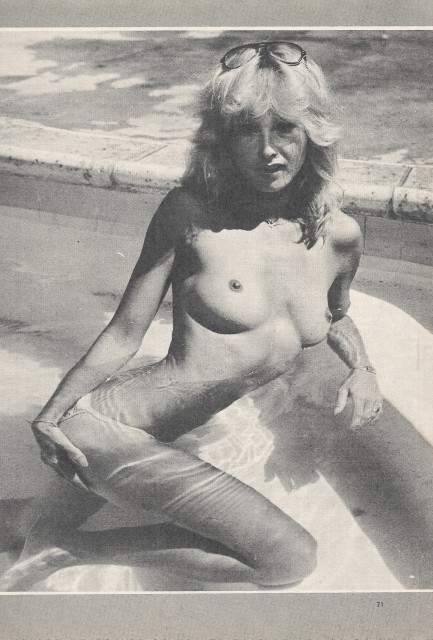 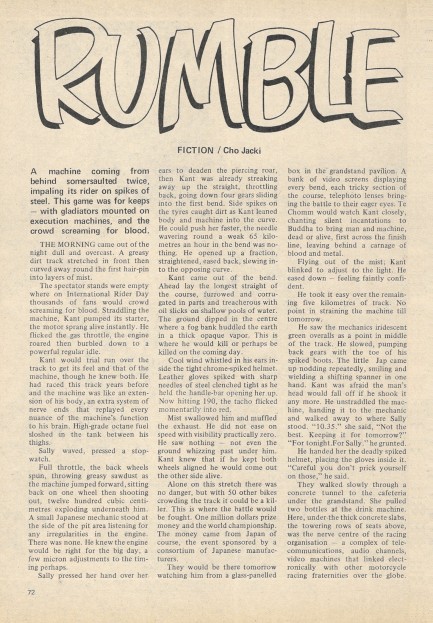 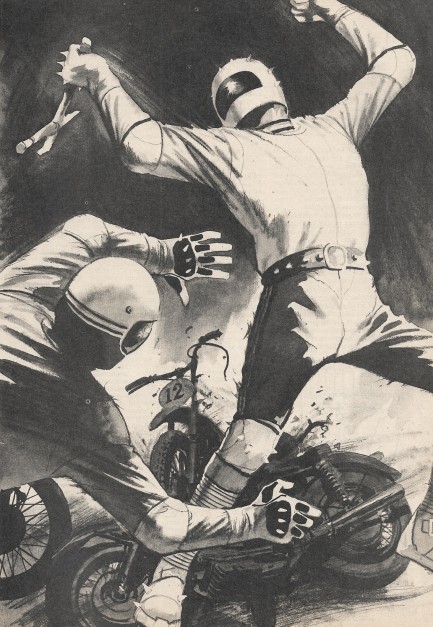 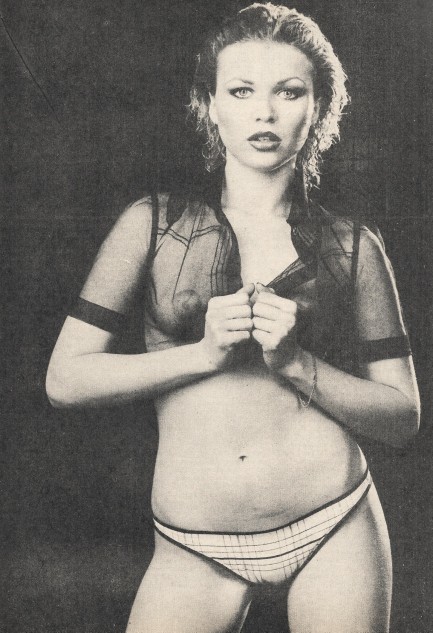 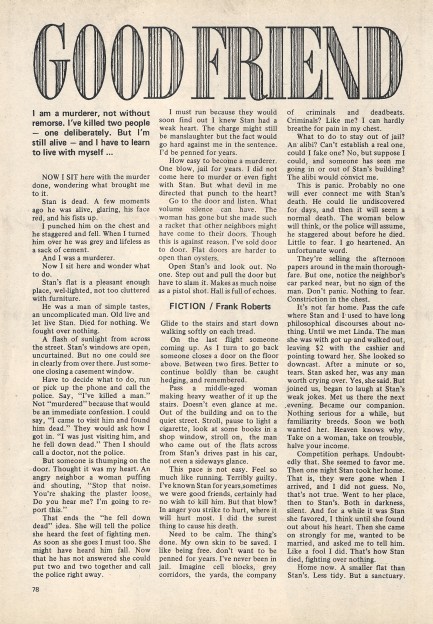 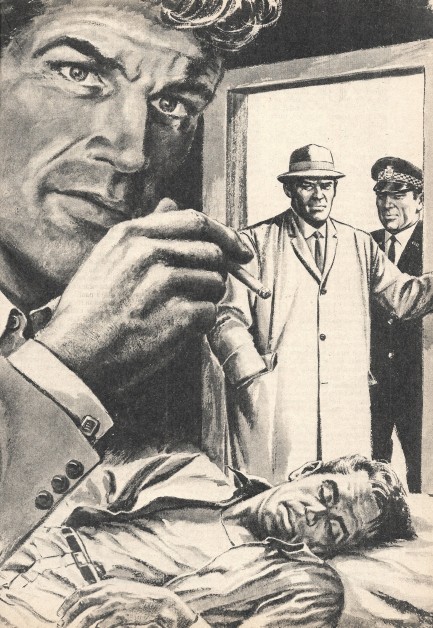 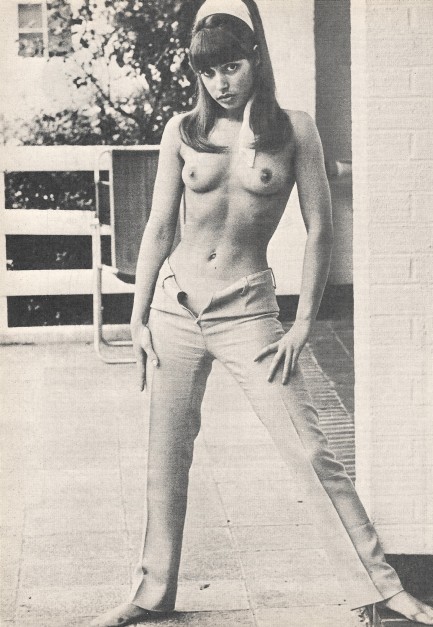
 Get the right two people together and the heat can set the world on fire. 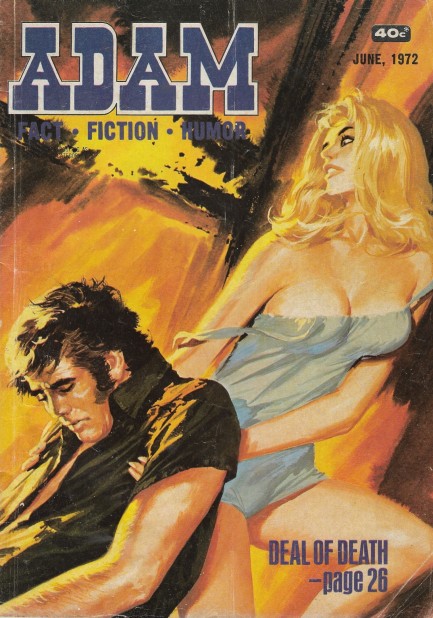  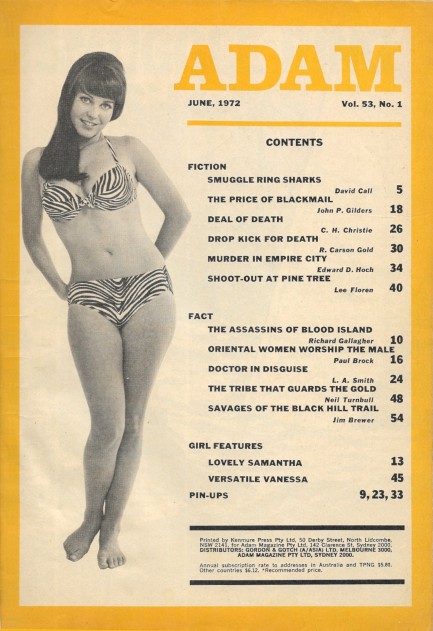 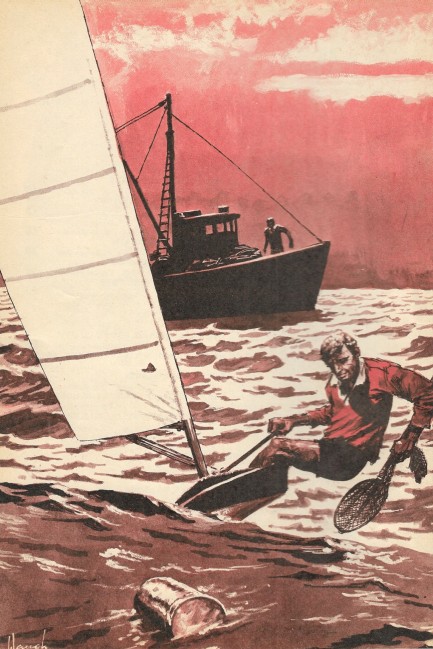 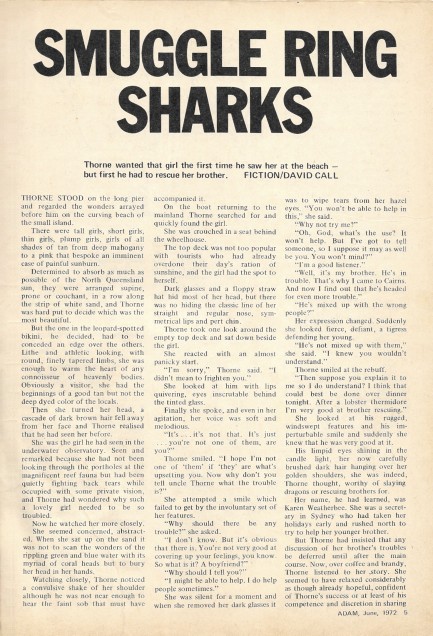 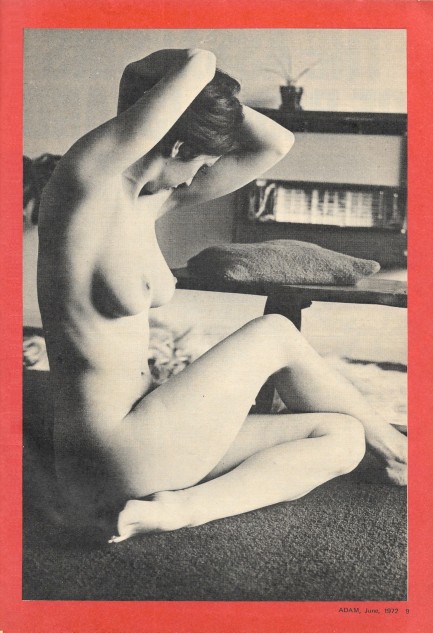 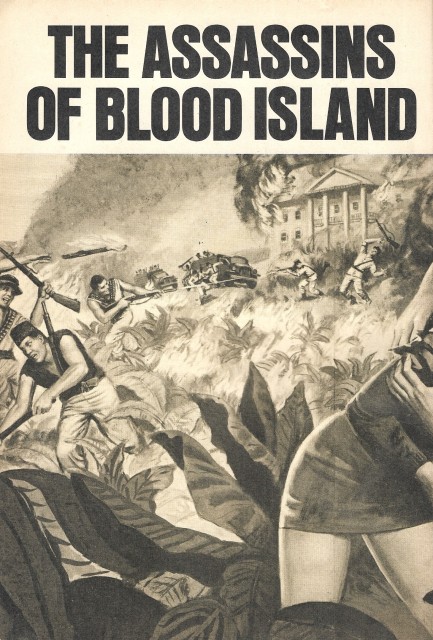   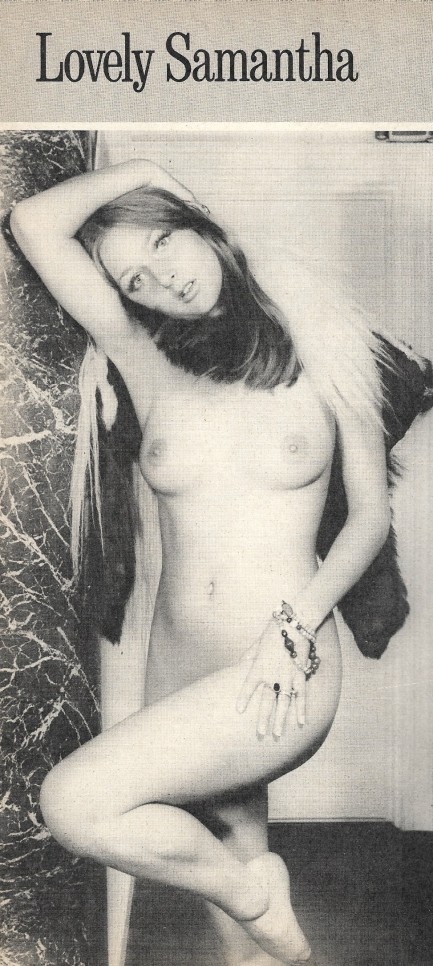 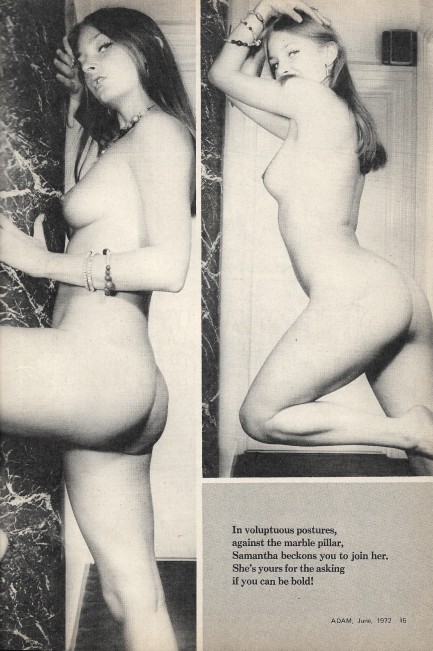 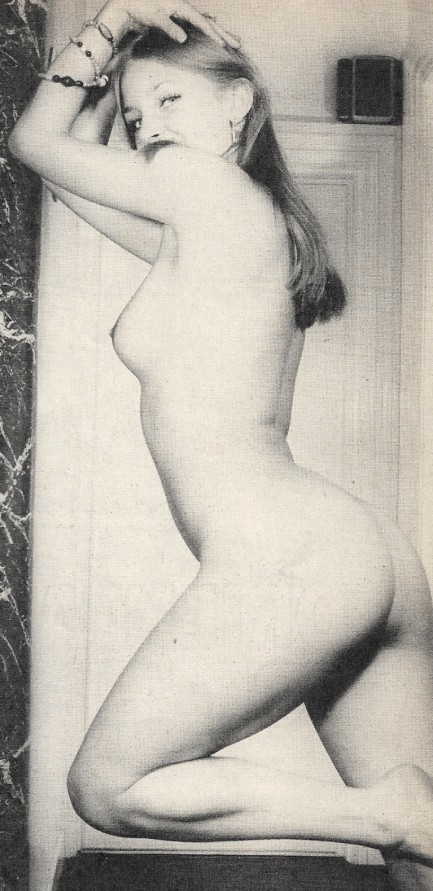 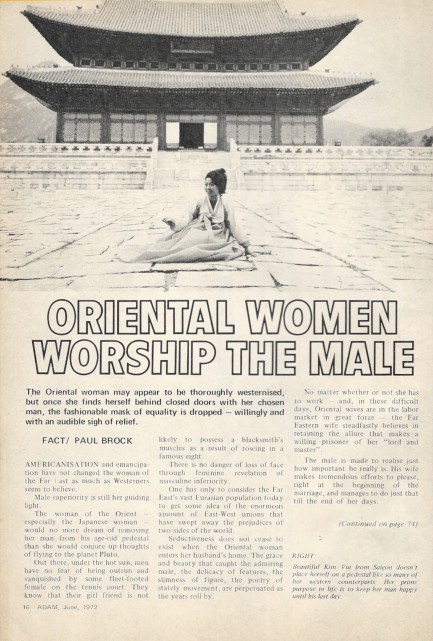 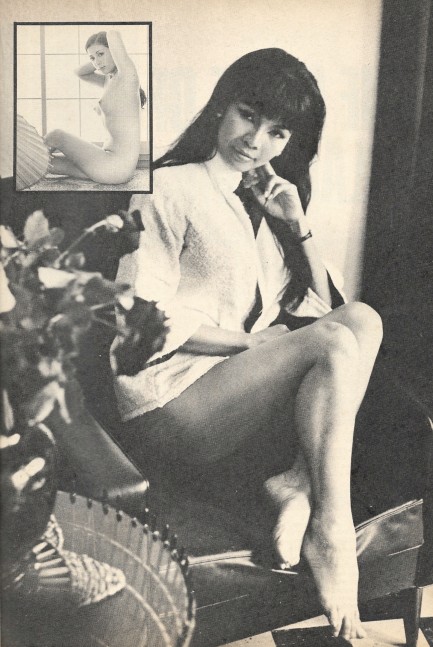 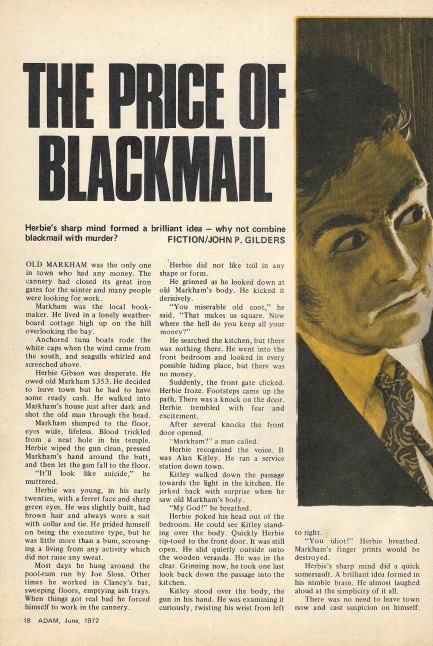 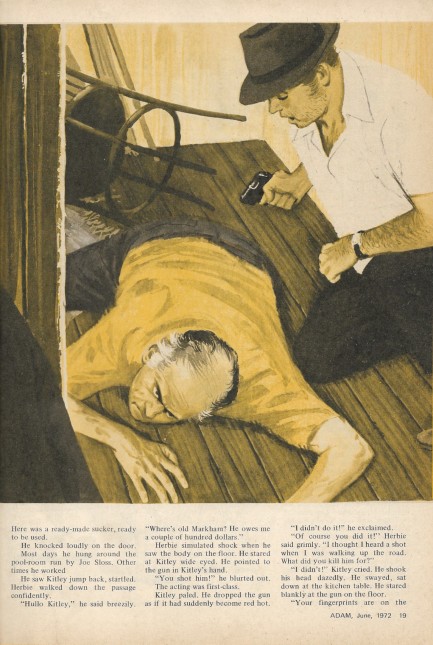 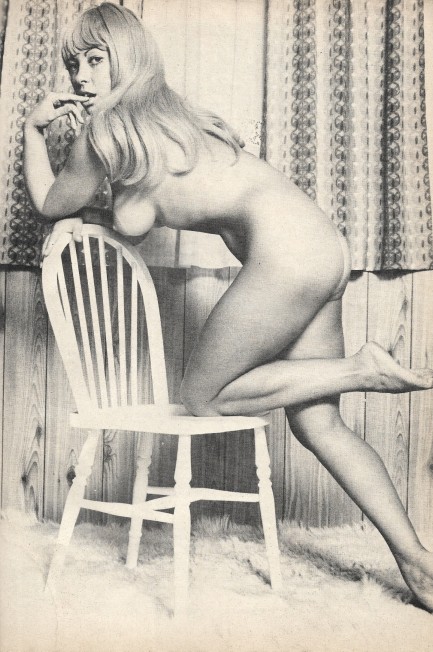 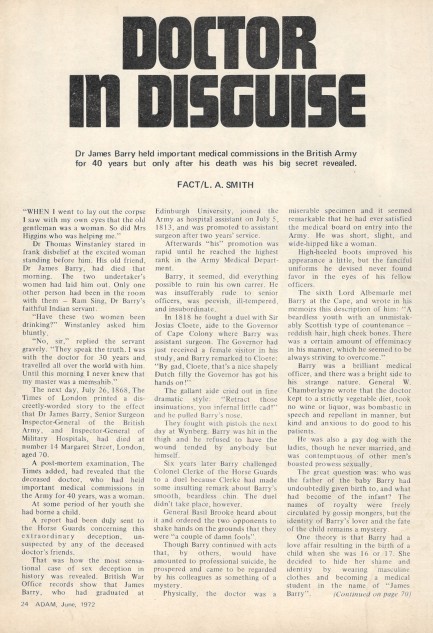 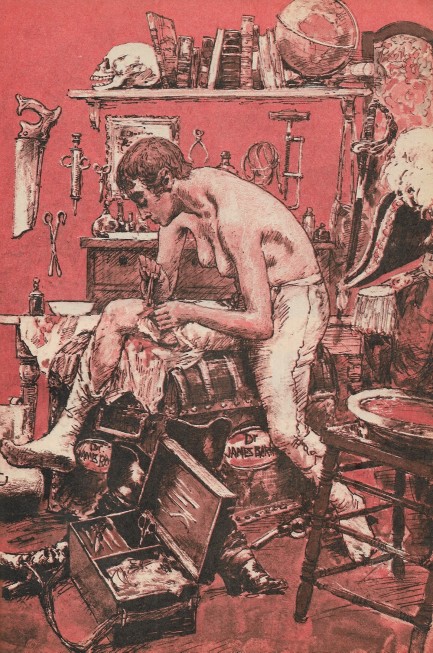 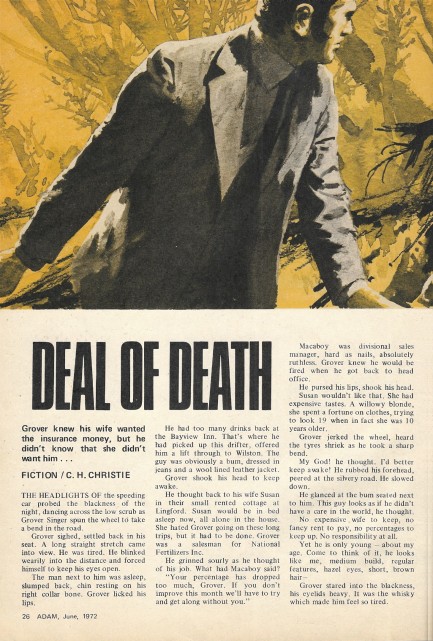 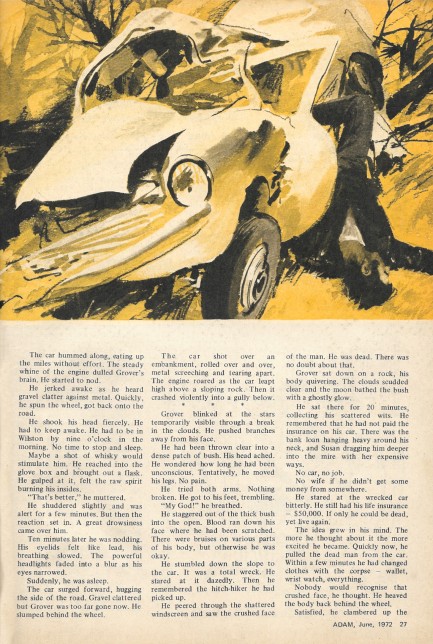  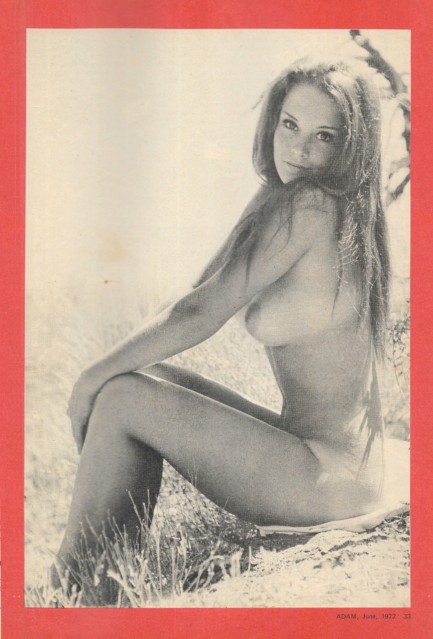 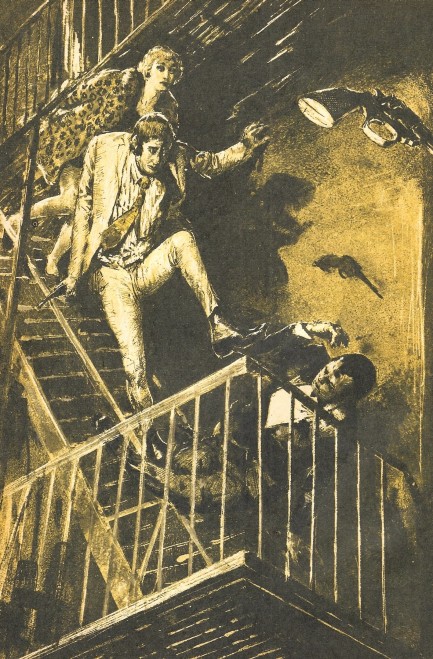  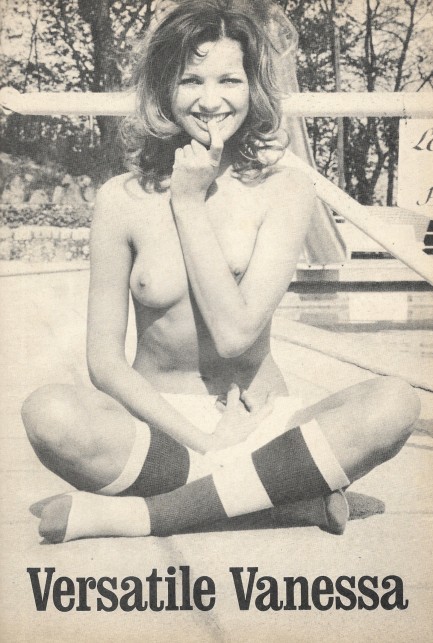 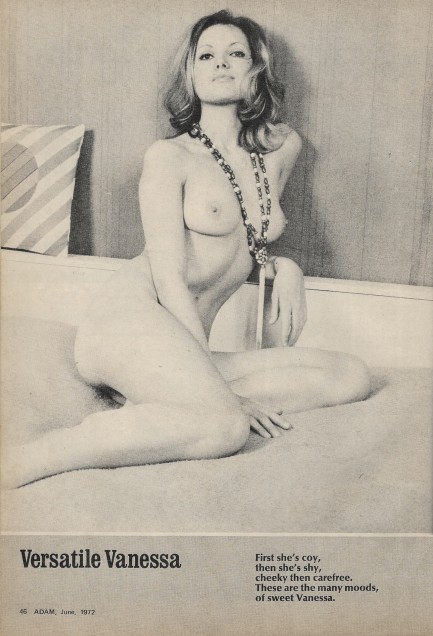 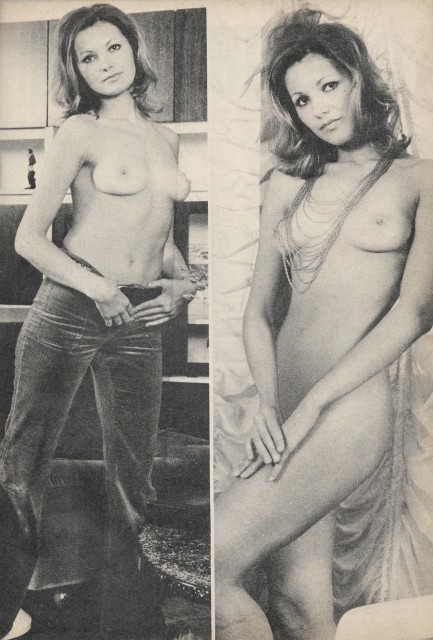 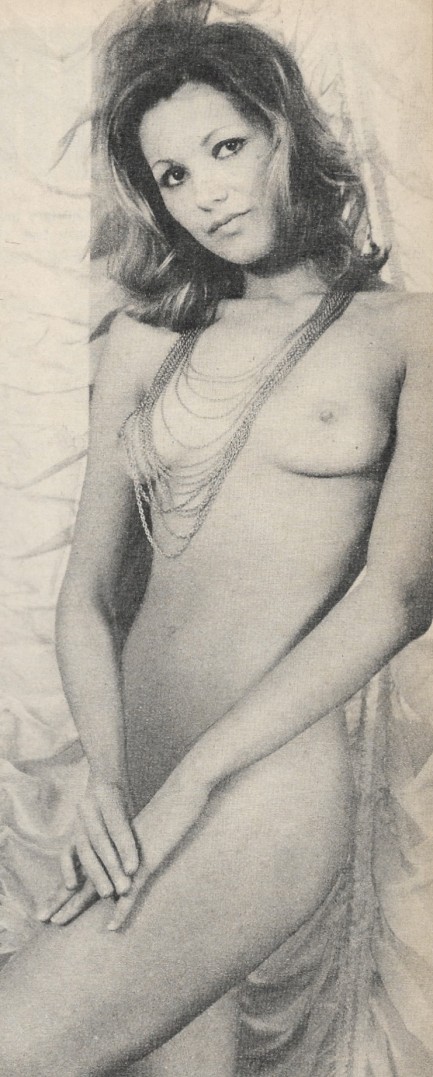 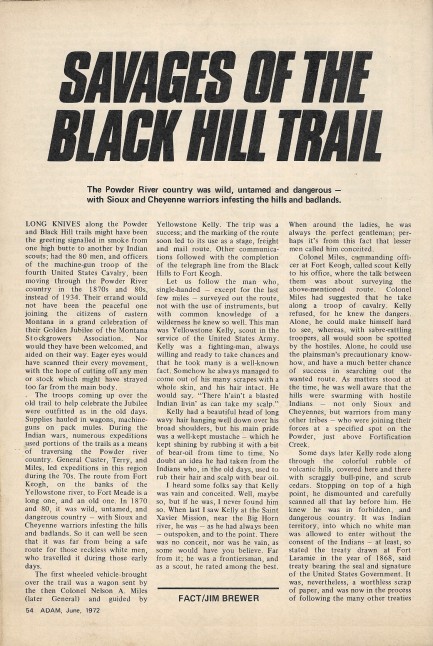 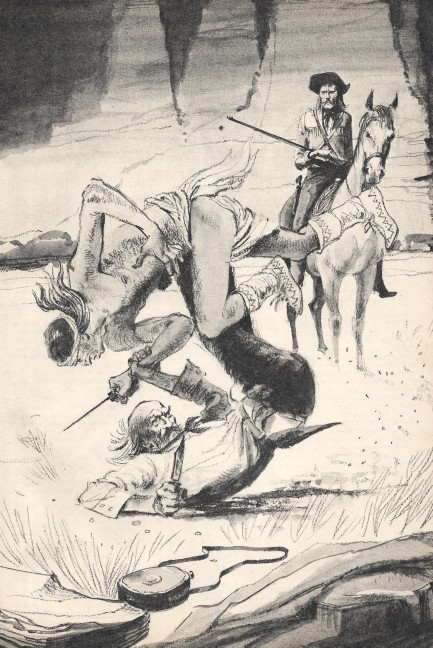 
Above: an issue of Adam magazine with another beautiful cover by Jack Waugh or Phil Belbin, illustrating C.H. Christie's story, “Deal of Death.” It's about a man named Grover Singer who's in debt and fakes his own death for $50,000 in insurance money (about $325,000 today). He does it by crashing his car with another man inside, but his wife knows right away the body isn't his. She doesn't tell the police, though, because she's been having an affair and recognizes the opportunity to run away with her lover and the cash. All that needs to happens is for someone to kill Grover for real. That's what lovers are for.
Also of note is the factual story “Doctor in Disguise.” The illustration give the disguise away. It's about a nineteenth century doctor named James Barry who practiced for forty years and upon death was revealed to be a woman. The long subterfuge involved everything from pretending to shave every morning in order to explain her smooth face to surviving a duel. In 2024, as women's rights remain under sustained attack, there's an opportunity built into this story for extensive commentary, but you know where we'd go, so pretend we went there and we'll let you get on with your Saturday. More from Adam soon.
 Men's magazines come of age with Esquire. 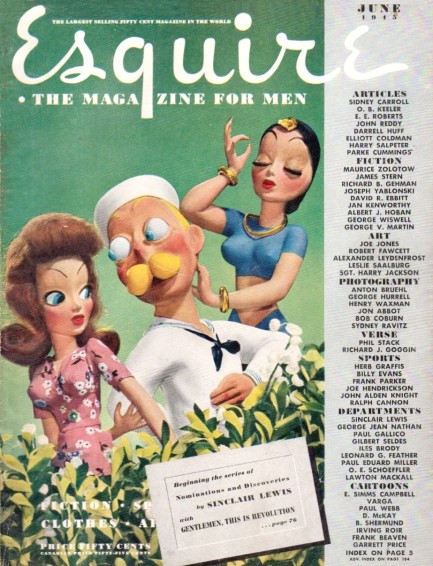
Esquire isn't a pulp magazine, but it's a seminal U.S. publication that goes back to that era, debuting in 1933 and becoming incredibly popular within only a few issues. Today's from this month in 1945 was given to us by a friend. It was an unexpected and generous gift. It's also an unusual one. Dimensionally it's thirteen inches by ten, a size we've only seen a couple of times before. That meant scanning pages in halves and assembling them digitally, and because Esquire was perfect-bound, the scanning meant the destruction of the issue. Inside, there's fiction from Richard Gehman, James Stern, George Wiswell, Maurice Zolotow, and others, accompanied by nice story art. There are also some brilliant portraits of show business celebrities—including Virginia Mayo, Vera Zorina, Dorothy Hart, Ann Miller, Daun Kennedy, and ballerina Milada Mladova.
But it's the ads that catch the eye. Advertising is a trip back in time, a look at what culture considered important, which is why we have a vintage ad feature in our sidebar. Esquire is packed with ads, chiefly for booze, smokes, and suits. Lots of suits. To think that artists sat at easels in studios producing these illustrations is an amazing thought—and bittersweet, considering how little artistic talent goes into advertising today. We picture the cast of Mad Men refreshing their creative reservoirs with an occasional drink, or even better, Darrin Stevens from Bewitched, struggling over his art pad until Samantha gives him a witchy boost. The ads are mostly signed—by the likes of Frederic Fellander, Jay Hyde Barnum, Robert Goodman, and J.N.C. Fenton. Enjoy the scans. We killed the magazine but it was worth it, we think. And thanks to Alex for the donation.
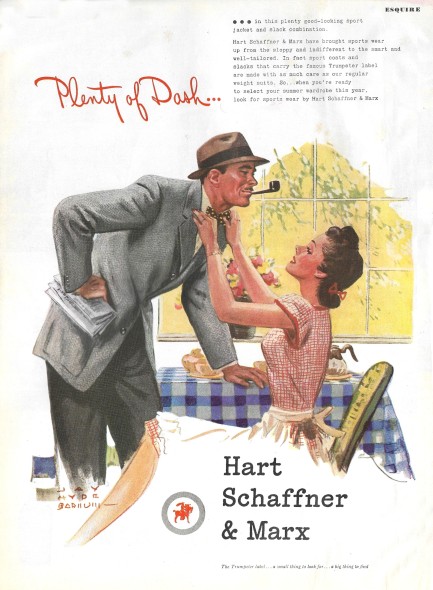 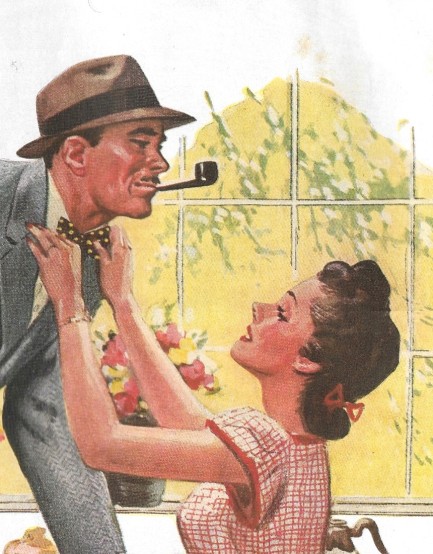 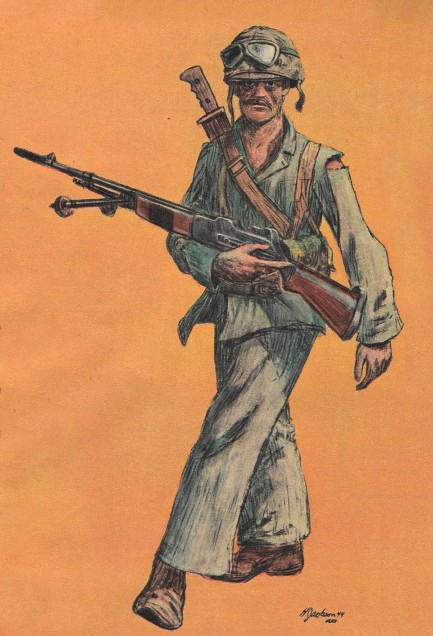 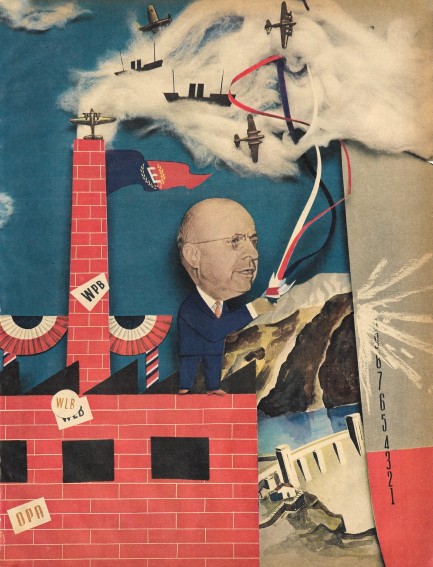 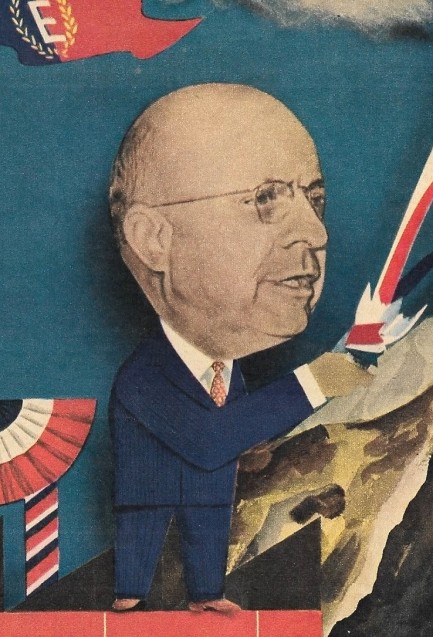 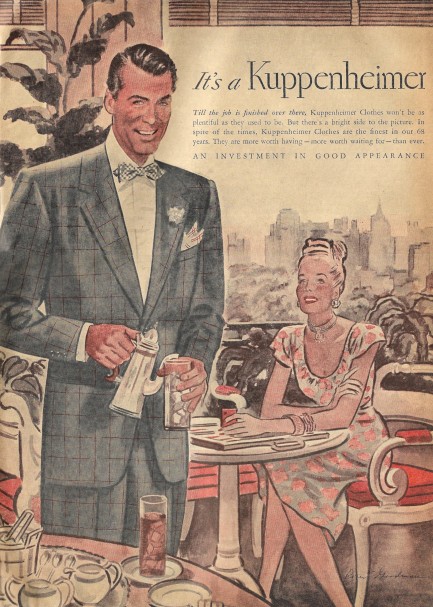 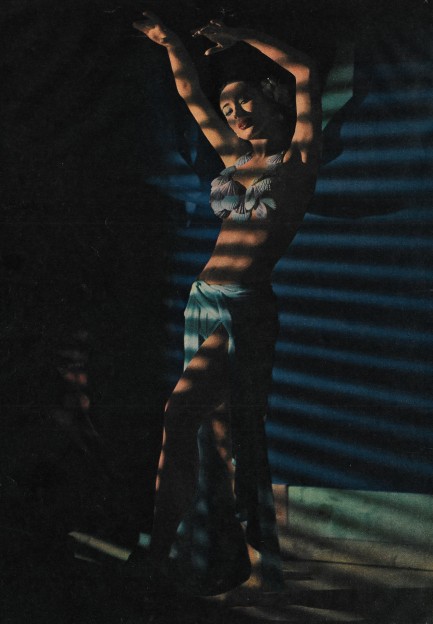 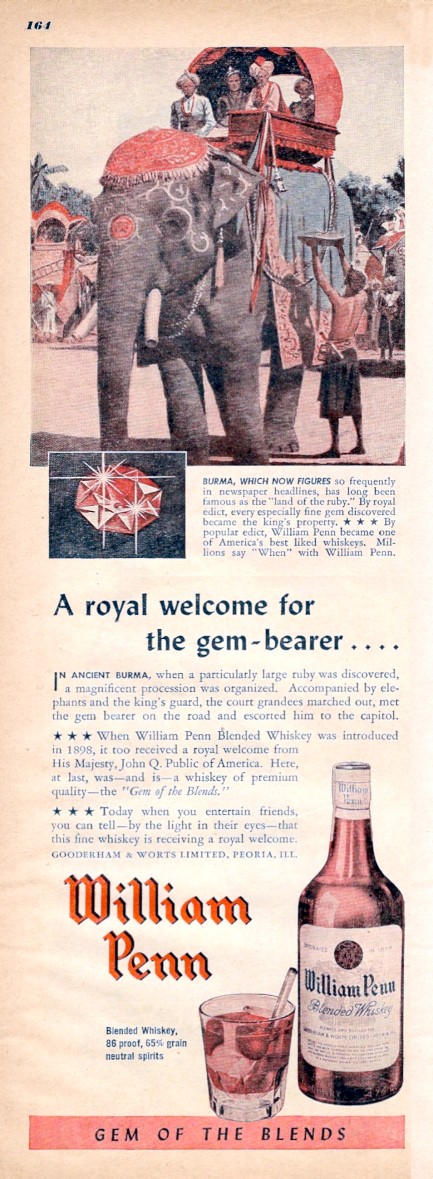  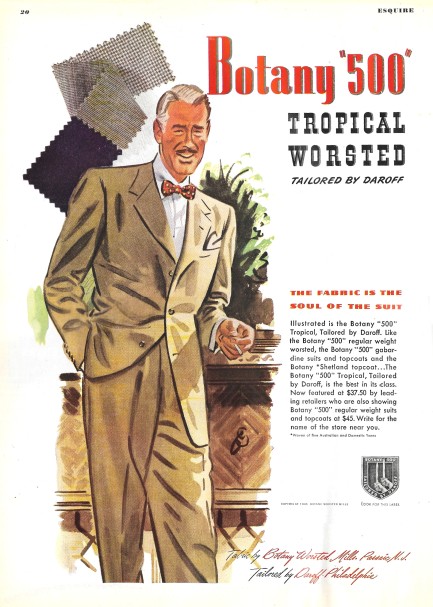 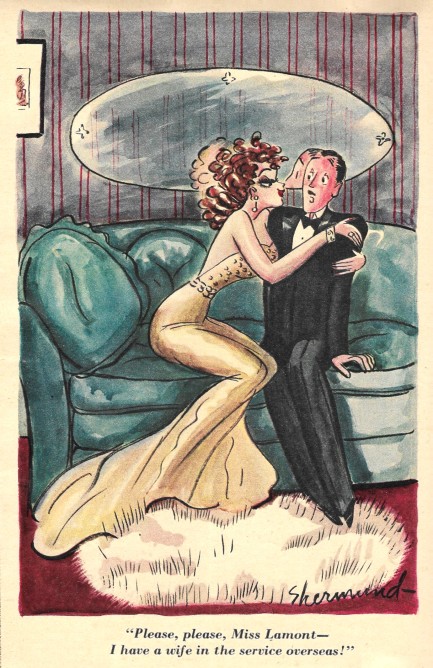  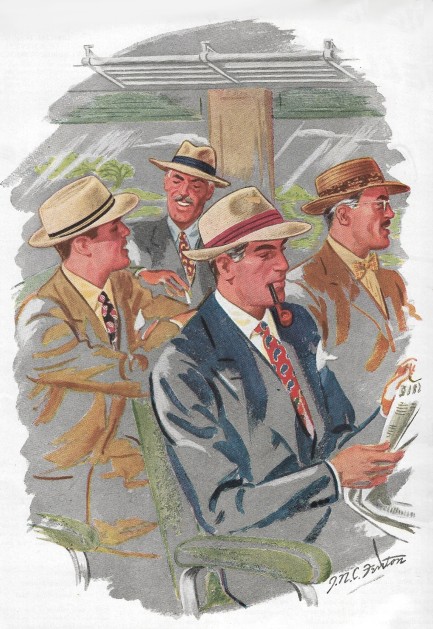 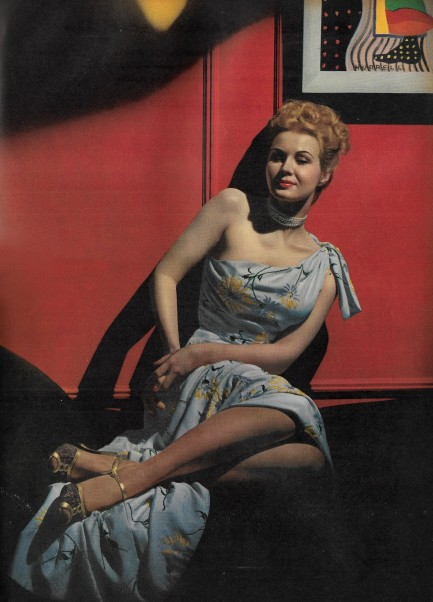 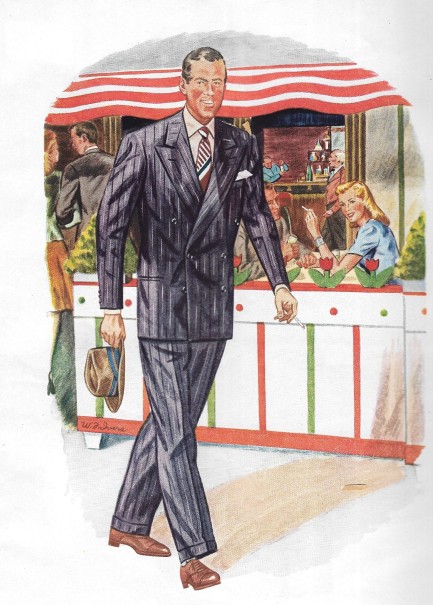 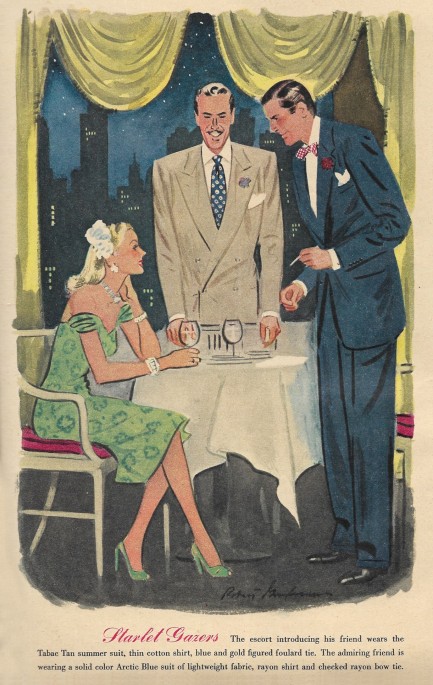 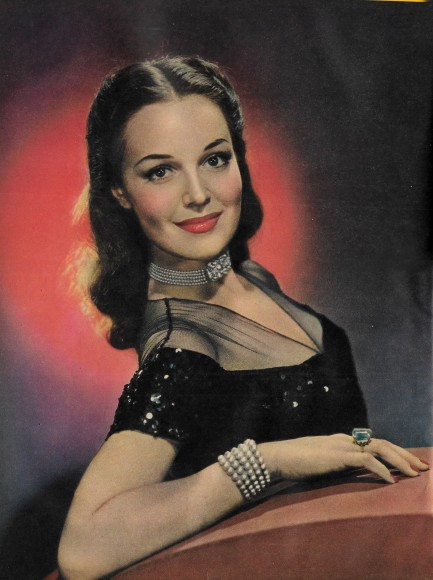 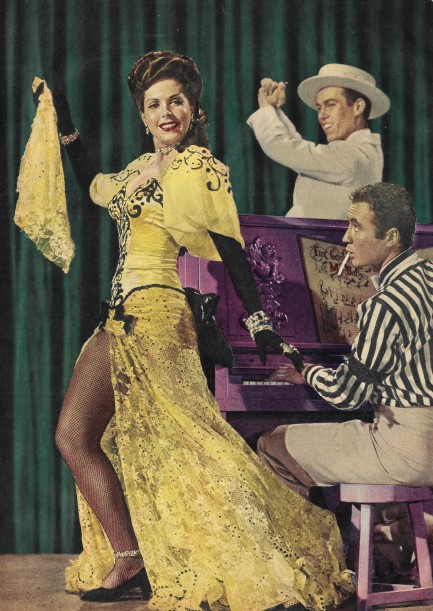 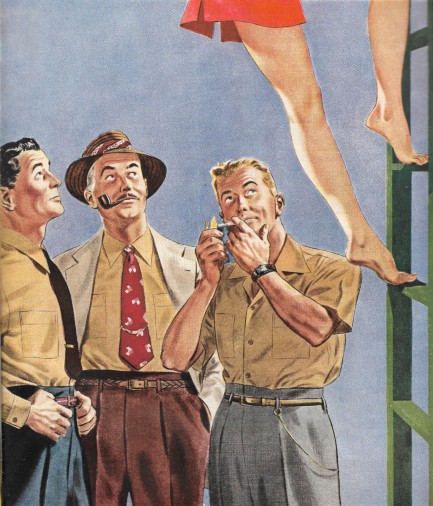  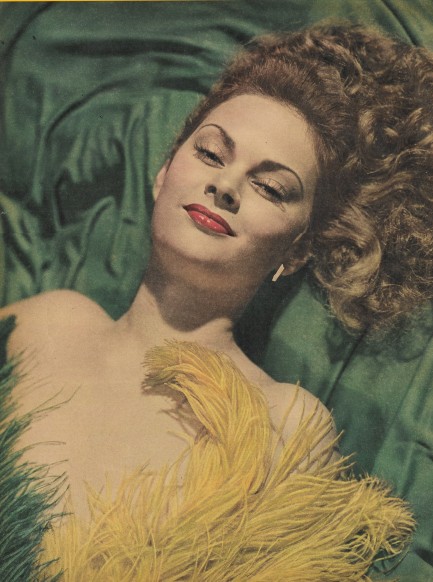 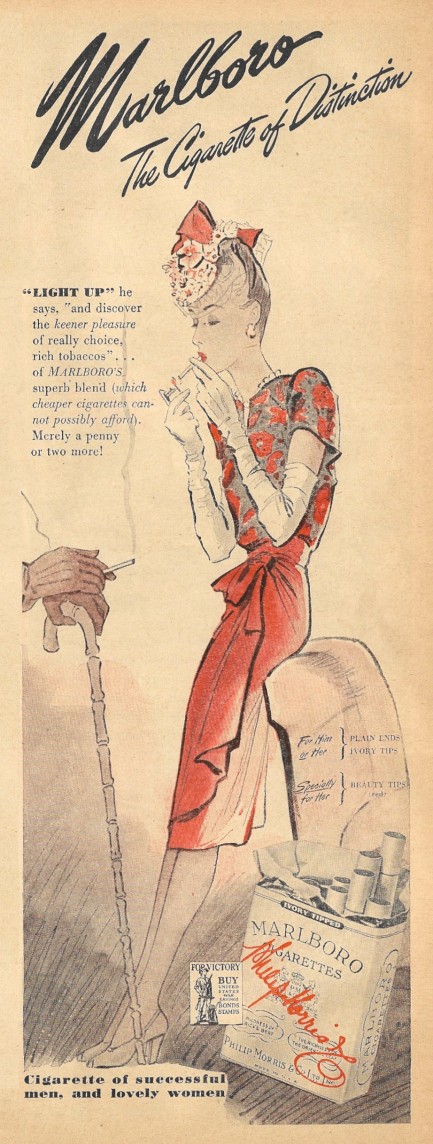 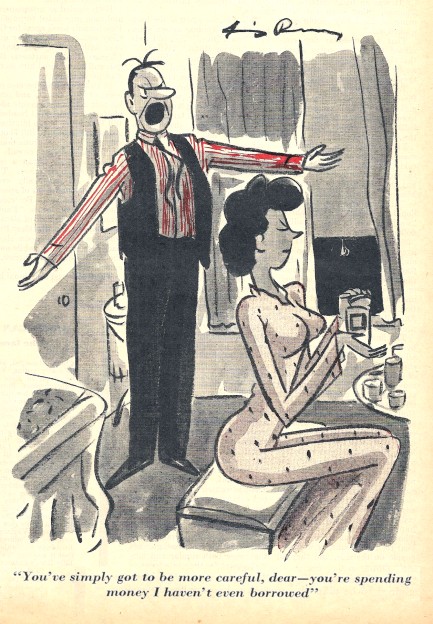 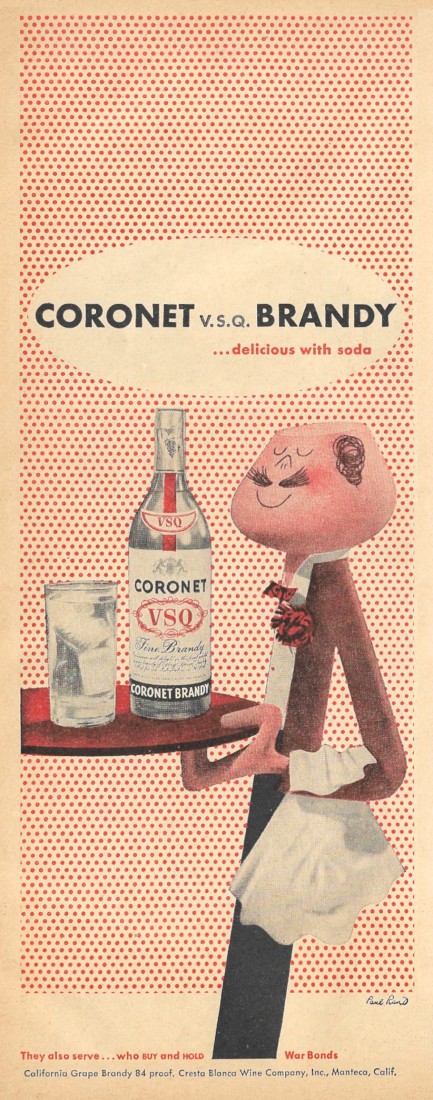
 She's a true professional. She doesn't care who shot who. She just gives to the utmost of her ability. 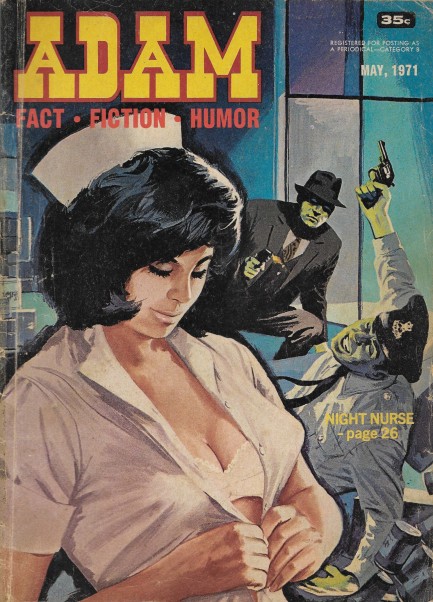
We have yet another issue of Adam magazine for you, published this month in 1971, with a cover illustrating Dick Love's story, “Night Nurse.” Generally the magazine's covers showed literal scenes from the fiction, but this one is more of a composite, with the nurse superimposed atop a scene of earlier violence. The story is about a cop who's shot multiple times and almost killed, is nursed to health during two months in the hospital, and upon his release tracks down his almost-killer. It has a present-moment framing device in which, first, a shotgun blast tears open a door he's standing just to one side of, sending his mind into a long reverie about the earlier wounding and recovery, before returning to him crashing through the door and taking down his quarry. The nursing aspect involves some sexual healing, but isn't cheesy or obvious. Instead, there are weeks of talking at bedside before the deed happens, and the mood and pacing are generally good. So it's nice work from “Dick Love,” whoever he or she may have been in reality. We have thirty-plus scans below, and those with sharp eyes and good memories will notice British glamour beauty Susan Shaw in the middle pages and again at the end. More from Adam soon.
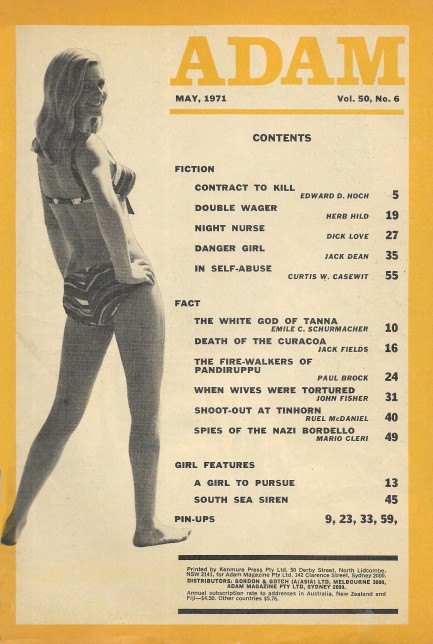 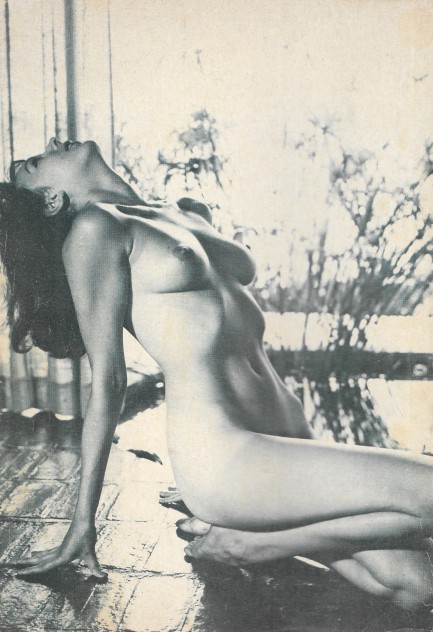 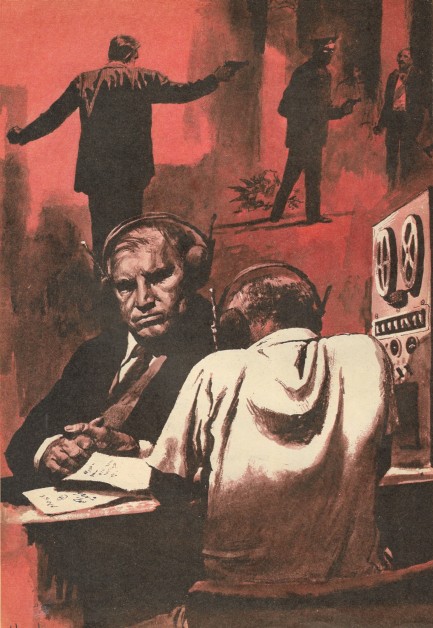 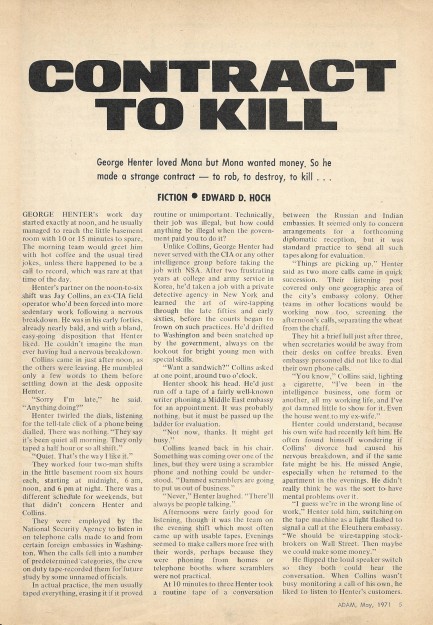  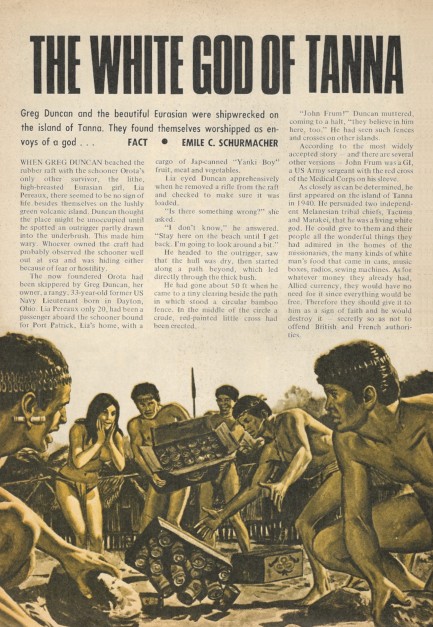 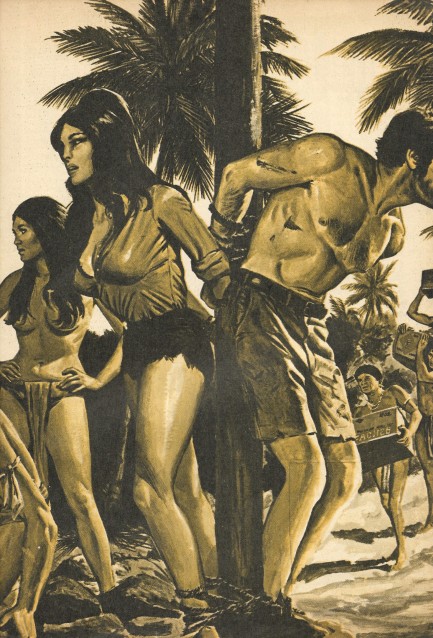 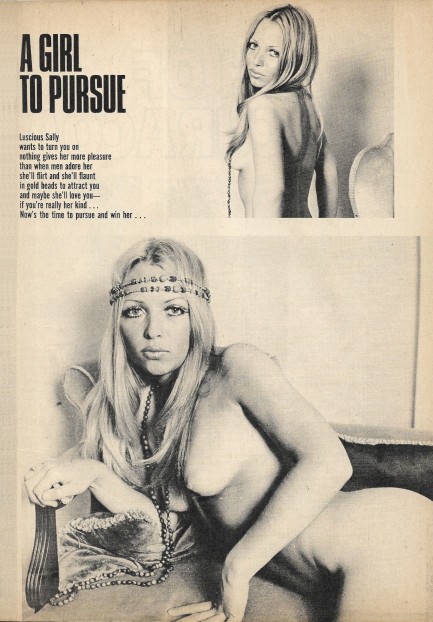 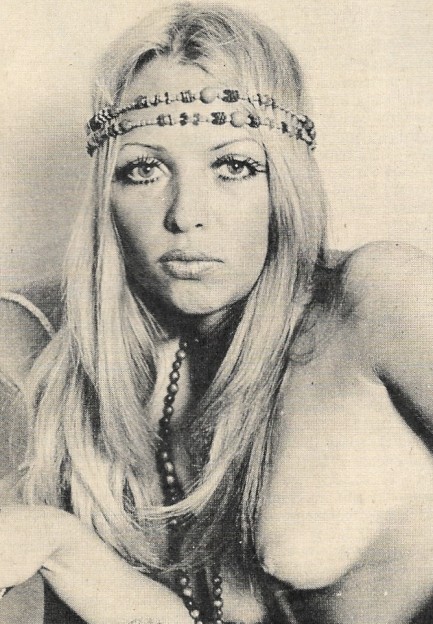 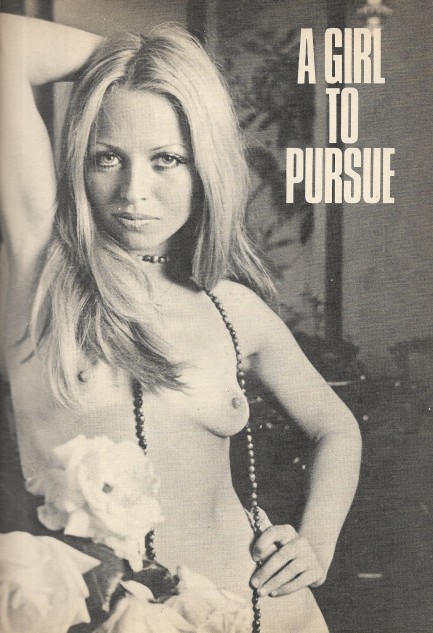 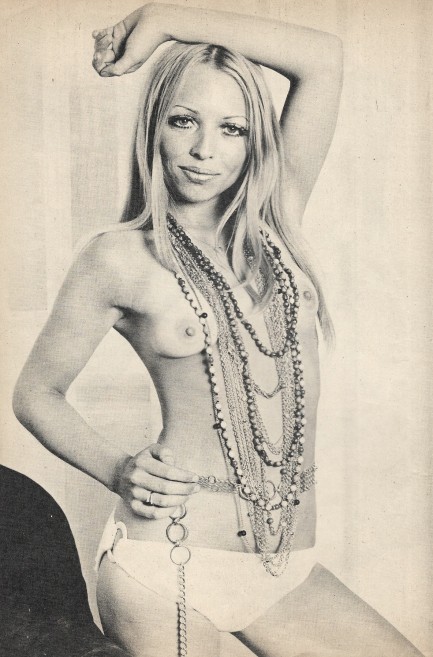 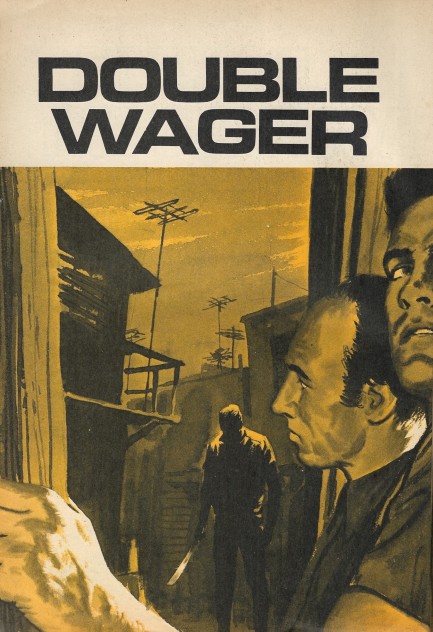  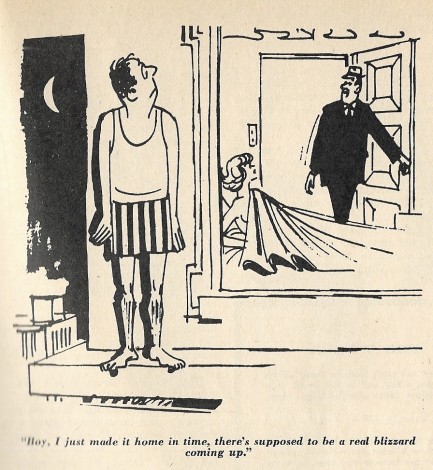 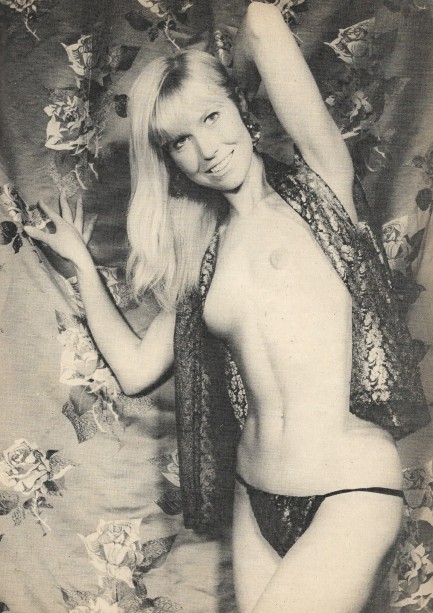 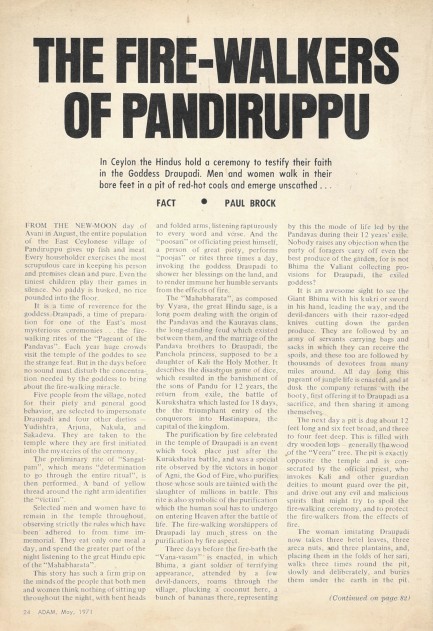 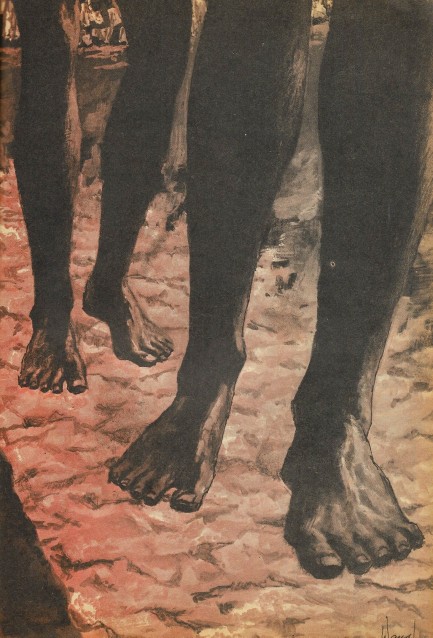 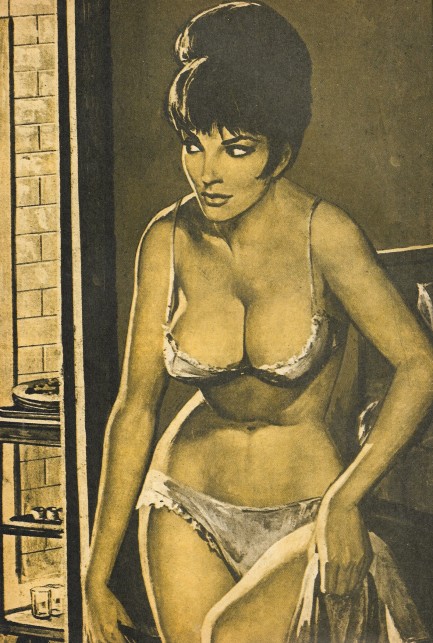 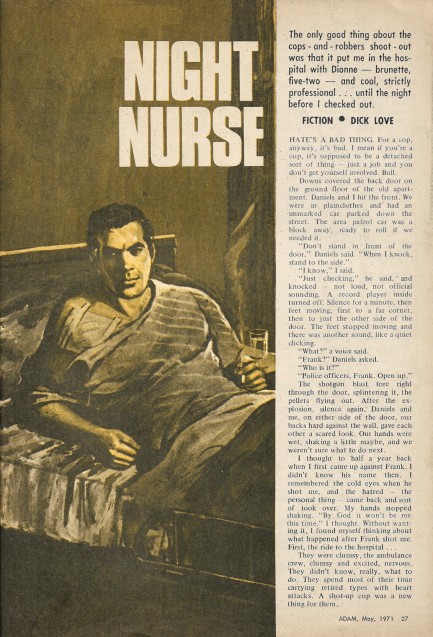 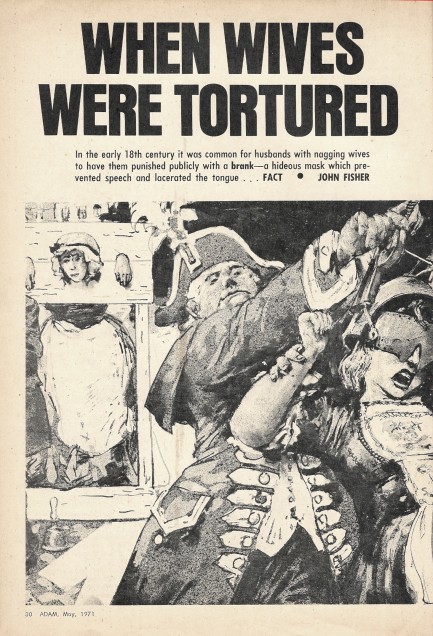 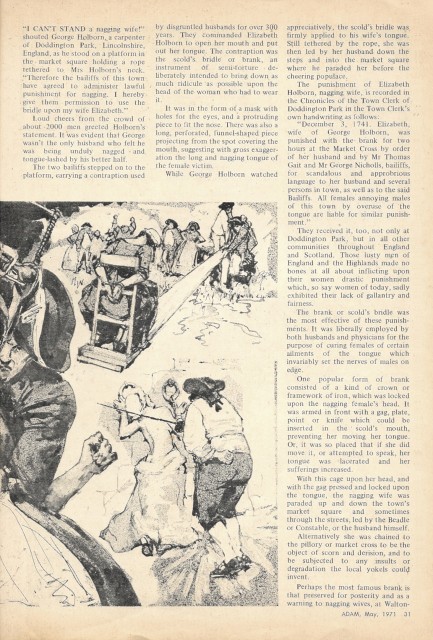 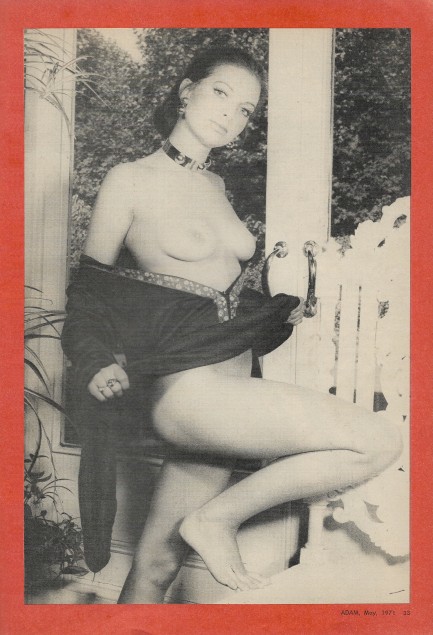 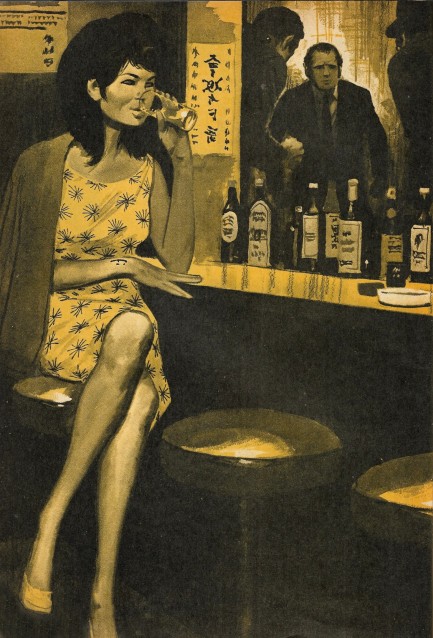 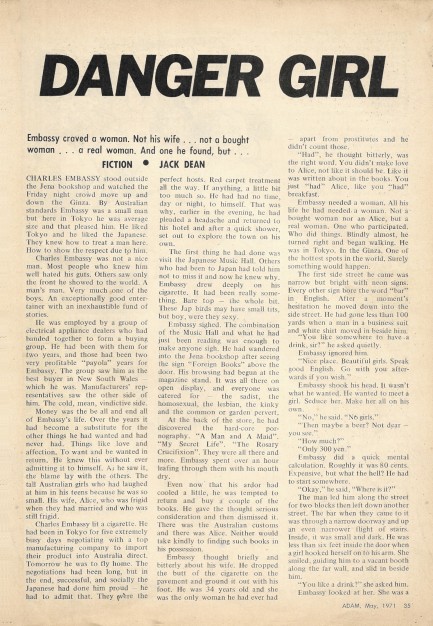 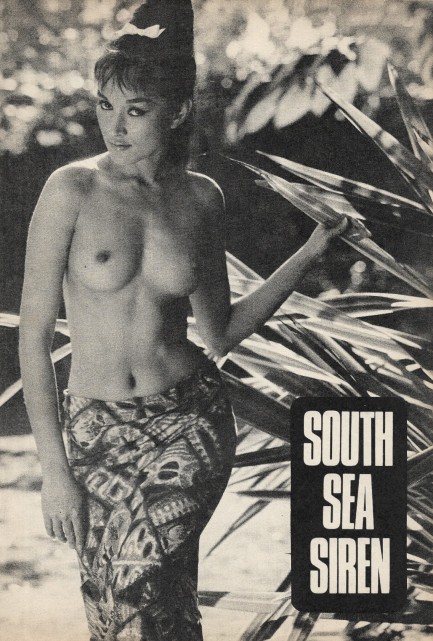 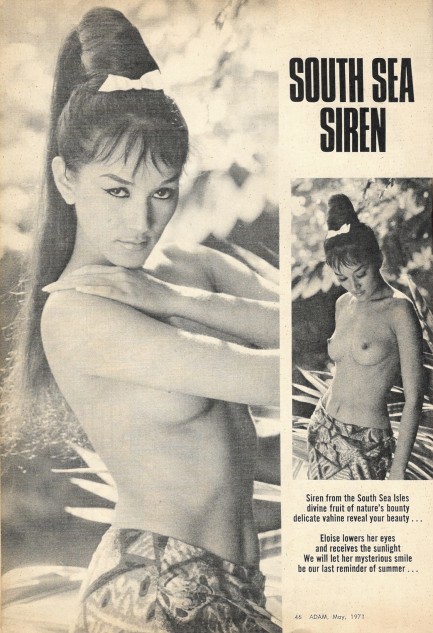 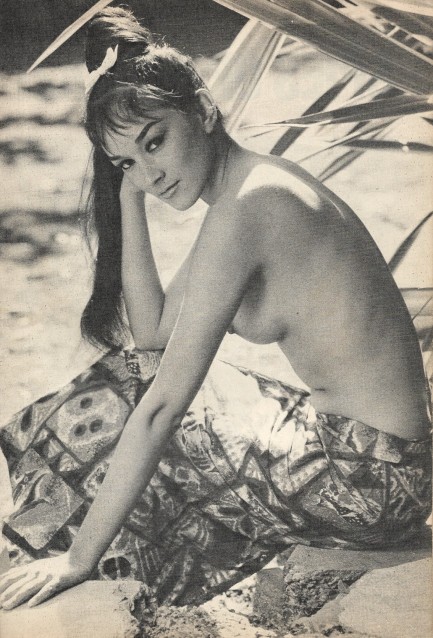 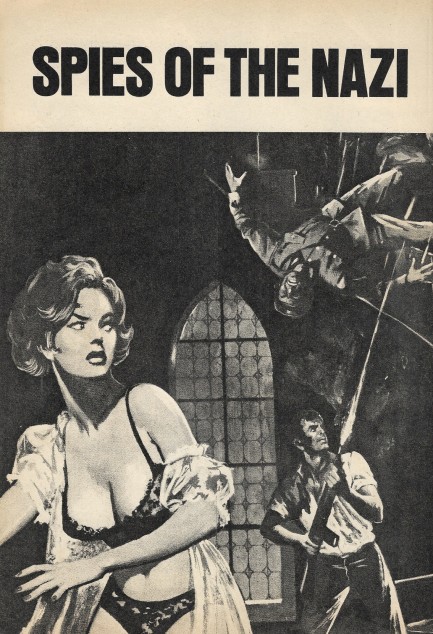 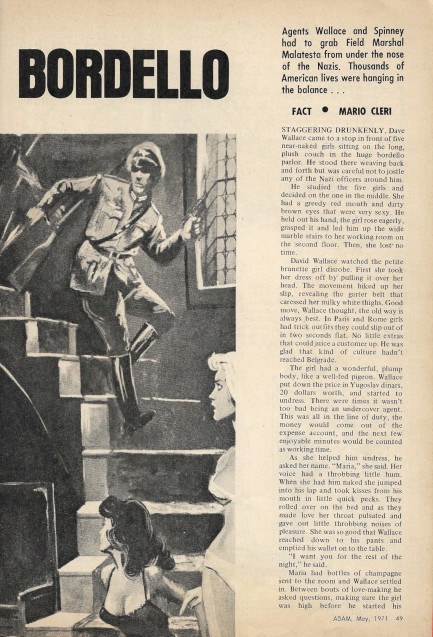 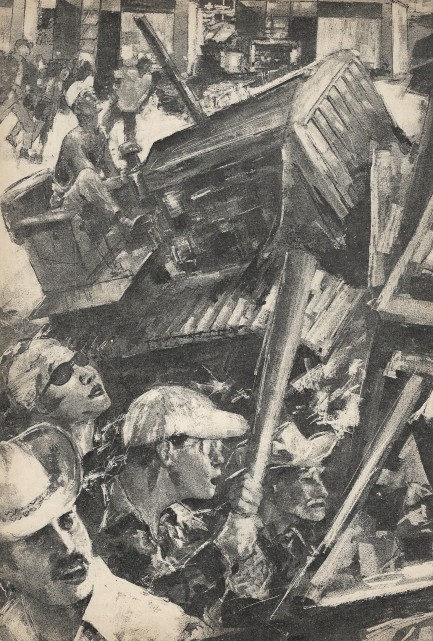 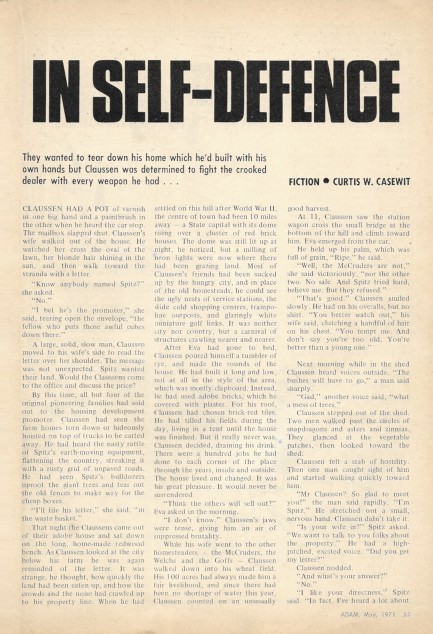 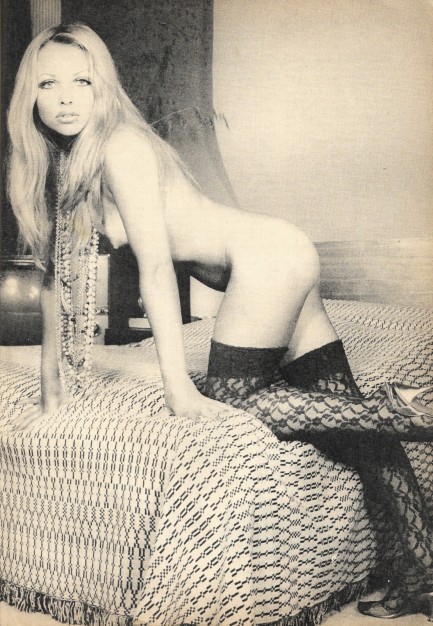
 I've never been a fan of lingerie, but your nightgown elevates this whole abduction into something really special. 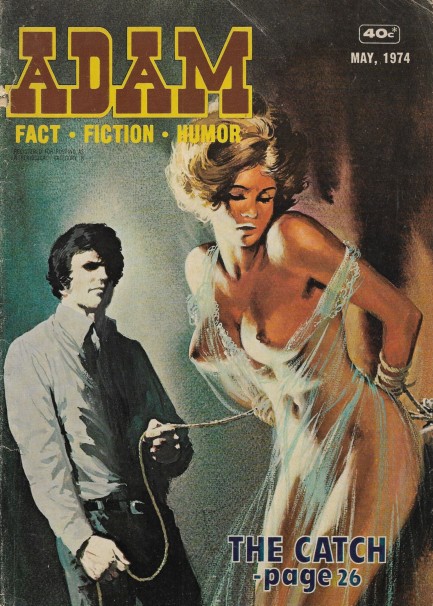
This issue of Australia's greatest men's magazine Adam reached newsstands this month in 1974. The cover illustrates Alexander Tait's story “The Catch,” about a boat captain who's given a slow-acting poison in order to ensure his compliance in a smuggling scheme. Adam covers were always painted to order, and that's especially clear here because not only does this lingerie bondage scene occur in the narrative, but the woman is described as having hair that “stuck out in all directions in some kind of afro style.”
What didn't stick out in the story was a lot of talent or imagination, but that's okay—there's always another thing to enjoy in these mags. For example, we thought “Sex and Serpents” was rather interesting. It's a factual story written by Paul Brock about snakes and sexual symbolism. Brock discusses cultures from ancient Egypt to modern Burma, and reveals that snakes are sometimes pickled or powdered. Our favorite anecdote involves an Appalachian preacher who allegedly used a live snake to beat three men and a woman into repentance for sexual sins. Afterward he probably beat his own snake. You know how it goes with these types.
Elsewhere in the magazine are the expected assortment of nude and semi-nude models, but one of them (panel eight below) is a photographed head and arms atop an illustrated torso. Can't say we've seen that before. Maybe she had a rash that day. Or maybe she refused to pose nude. Imagine her surprise when the issue hit the racks. We can only hope she beat the photographer with a snake. Moving on, there's art by Jack Waugh, and few cartoons that made us smile. Not laugh, mind you. Just smile. Scans below, and we'll be revisiting Adam later this month. 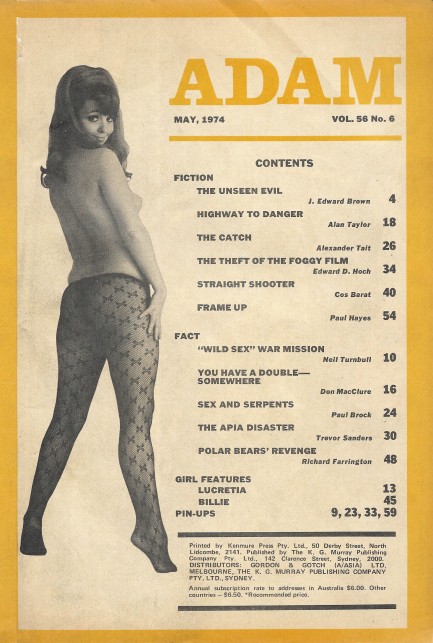 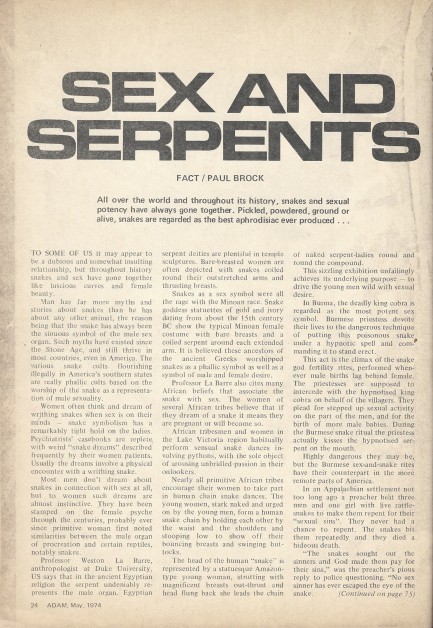 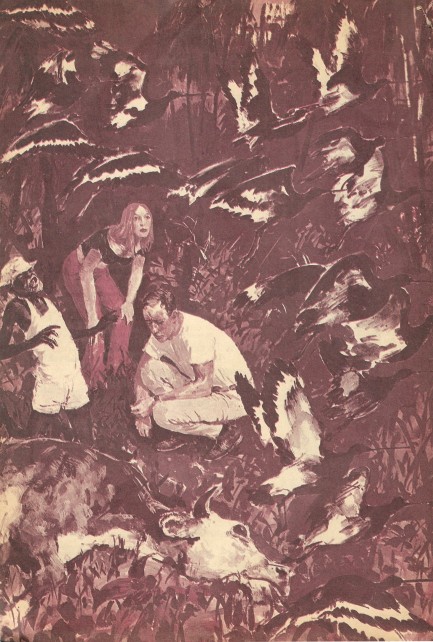 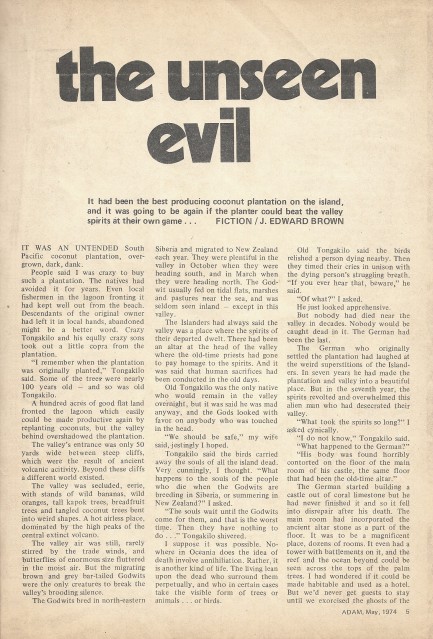 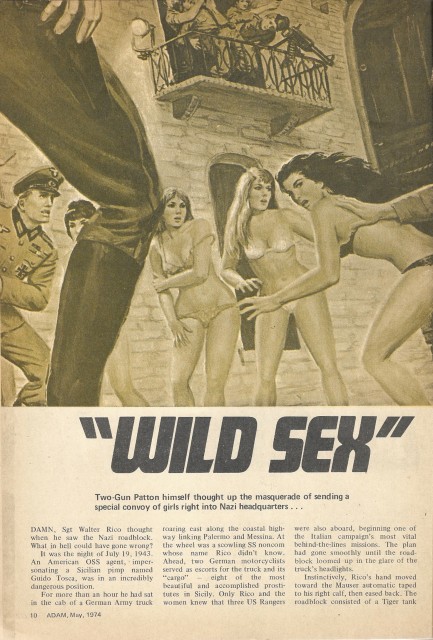 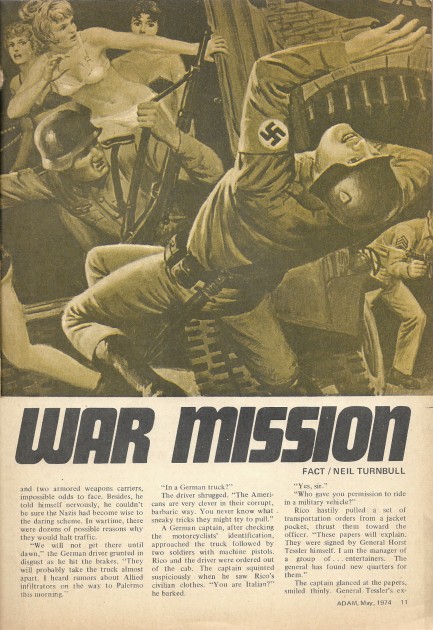 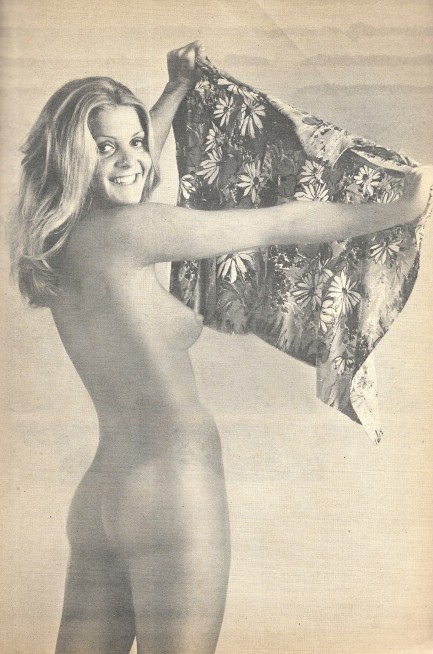 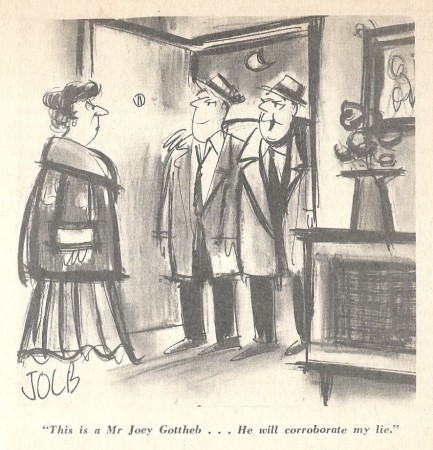 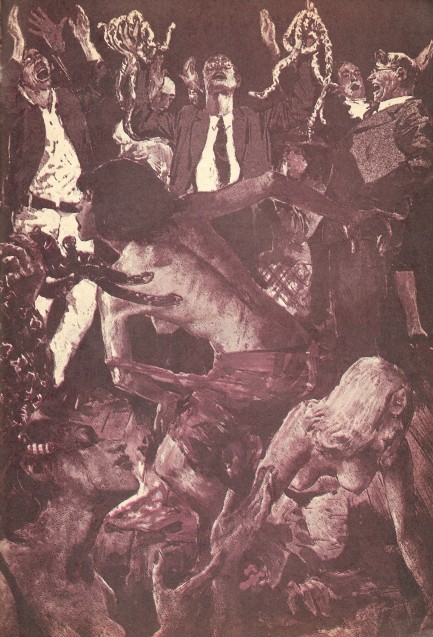 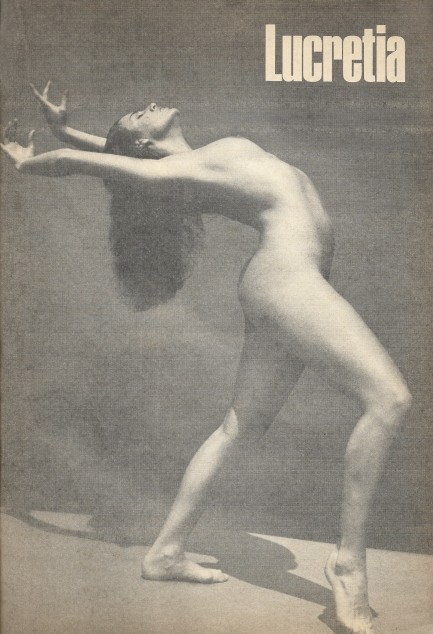 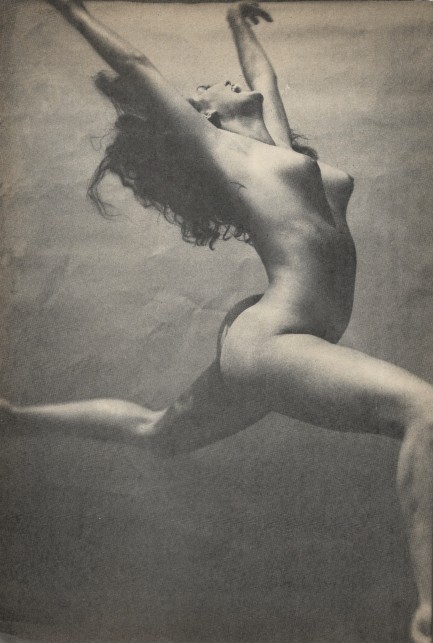 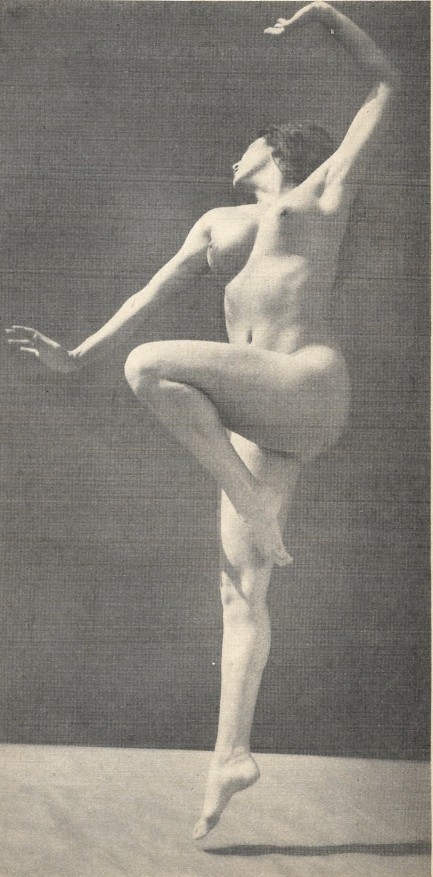 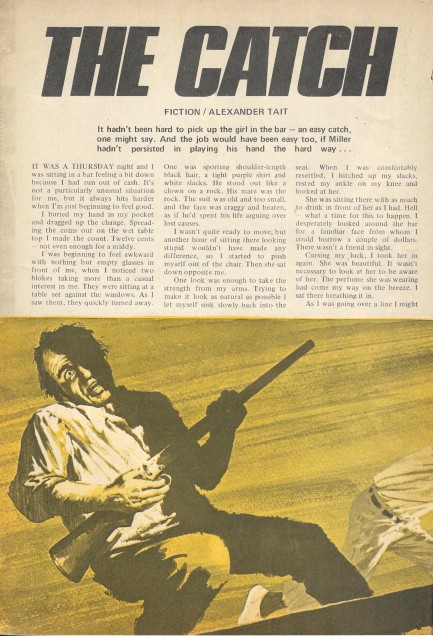 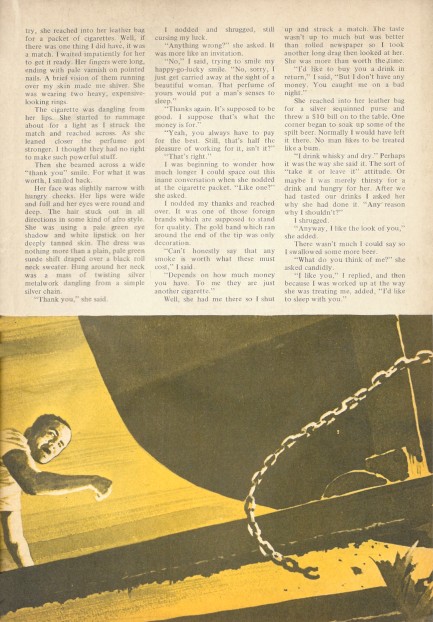 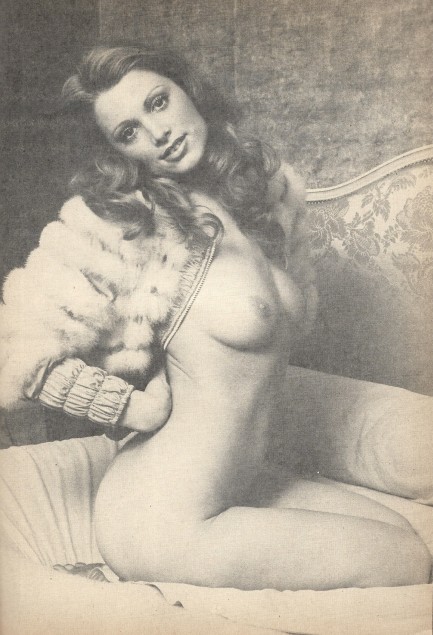 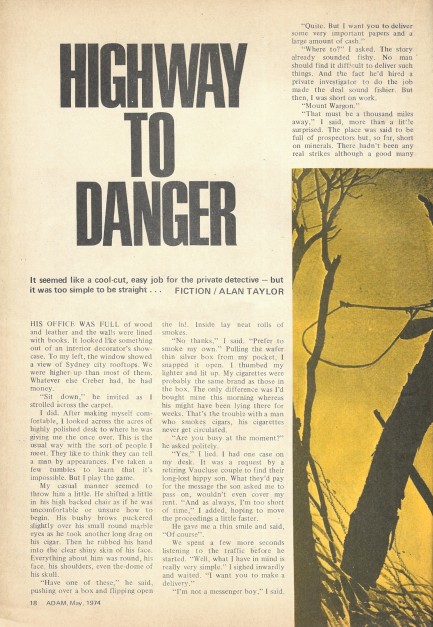 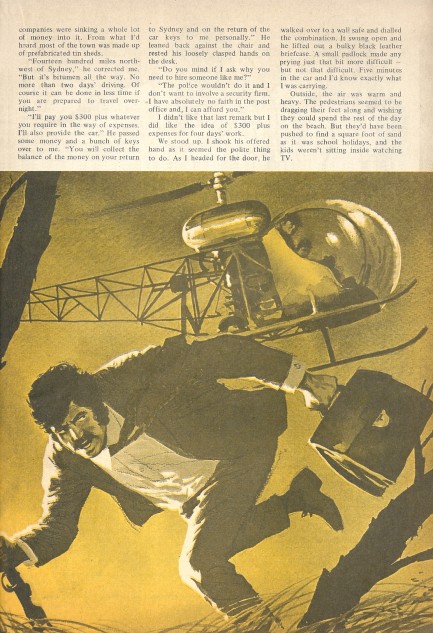 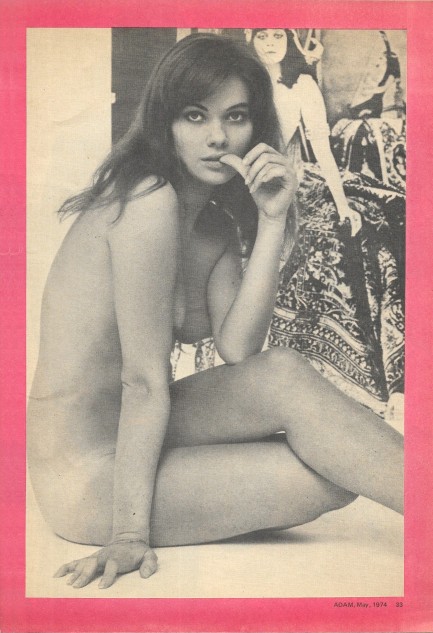 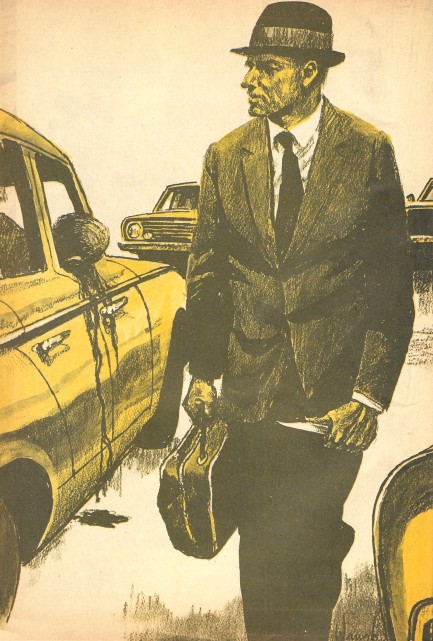 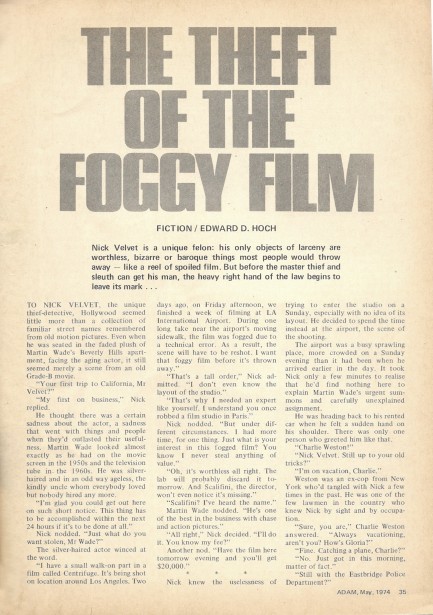 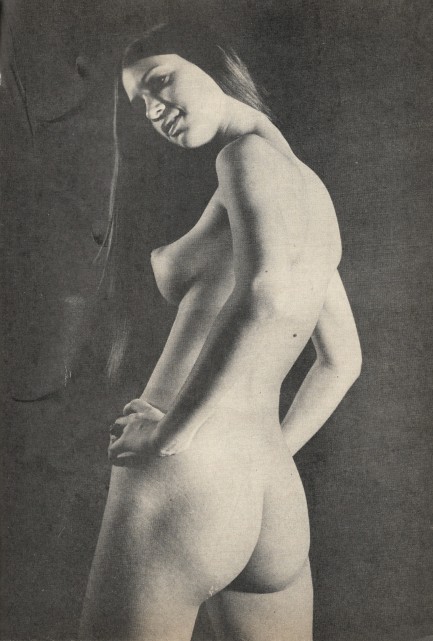 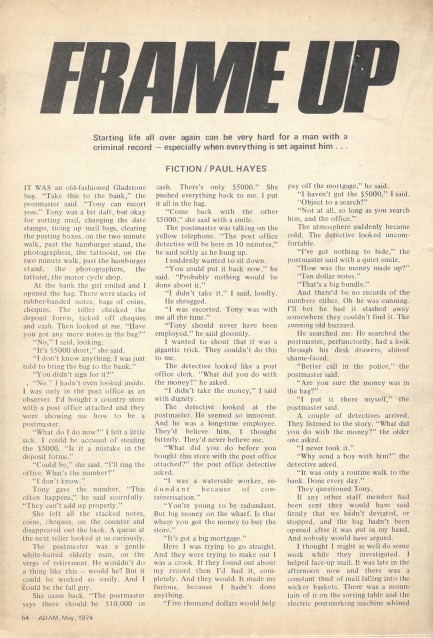 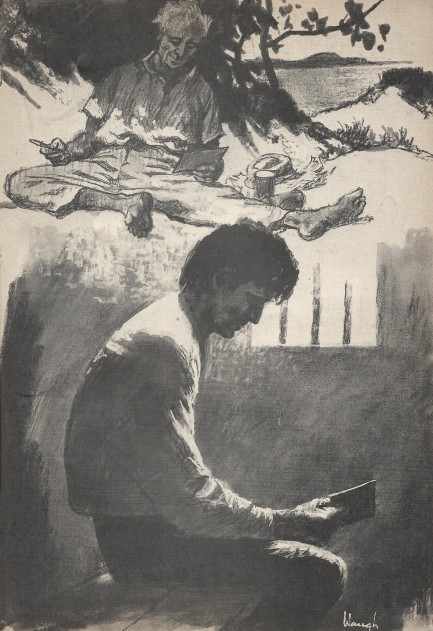 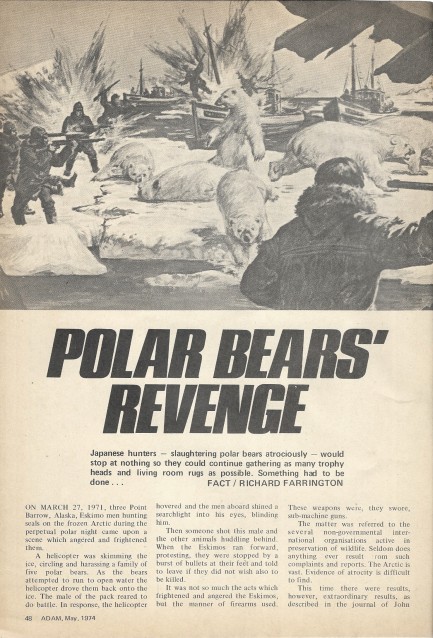 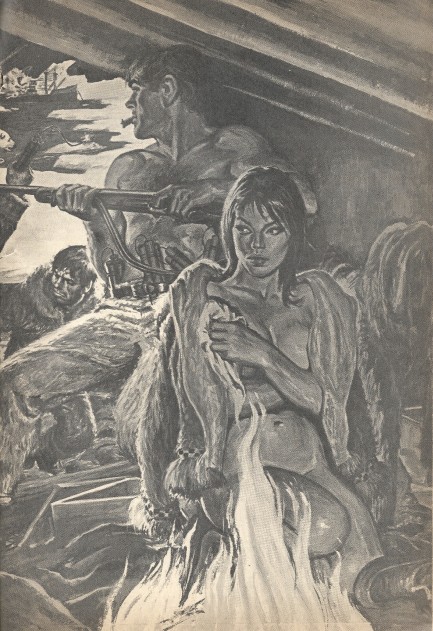 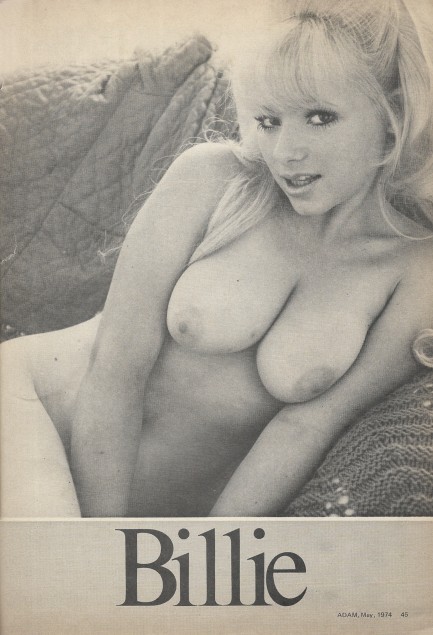 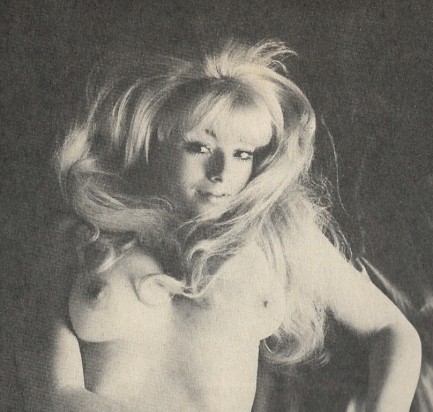 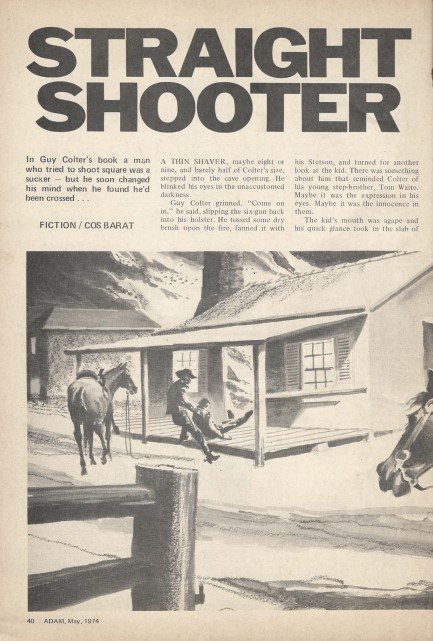 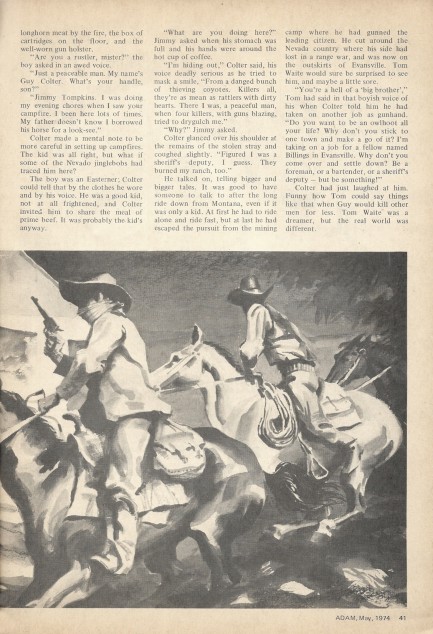 
 Police! Help! I only have a few moments! I've been kidnapped and they said they'll— *sigh* Yes, I can hold. 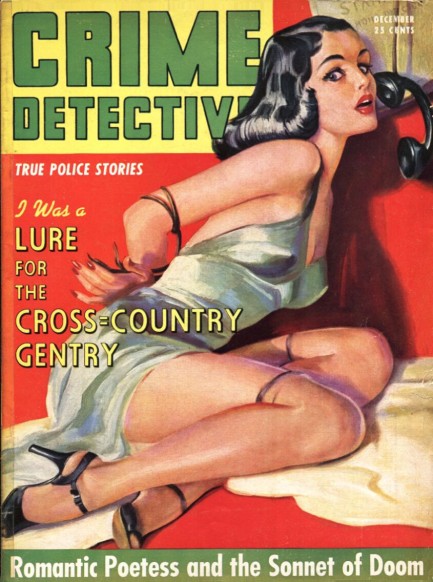
Above: a cover of the true crime magazine Crime Detective, published in 1941. These are core pulp, and they usually have extremely interesting stories. With titles like “Romantic Poetess and the Sonnet of Doom,” what's not to like? Well, one thing. They're usually overpriced. Vendors ask forty, sixty, even eighty dollars, while excellent crime novels are often obtainable for ten dollars or fewer. So our focus has always been on the latter. Still, this is a nice cover. It's by Delos Palmer.
 This is what's called in the realm of answers a hard no. Don't let the door hit you in the dick on the way out. 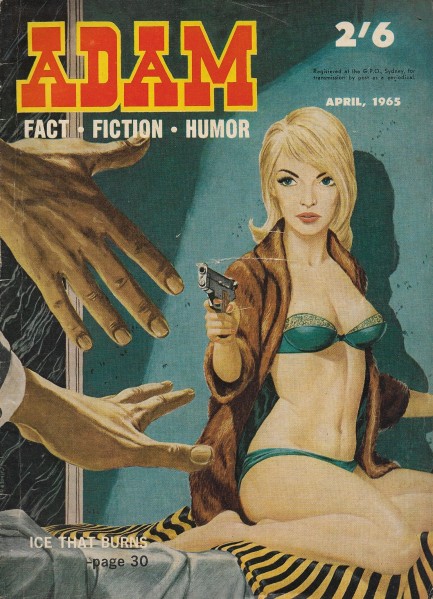
To say that Adam magazine is an interest of ours is an understatement, but we haven't shared an issue for eight months. That's been a result of our drawn out and complicated move, which we initiated last summer, thought we'd have finished by November, but actually just completed to the point of unpacking our scanner last month. Lesson: buying a house in the south of Spain takes three times longer than you anticipate. Rest assured, though, we're still collecting Adam, and today we're sharing our eighty-fourth issue, which takes us down to fifty-four more we need to upload.
This particular example, which was published this month in 1965, was tightly bound, so we have only a handful of scans because we didn't want to destroy the magazine by flattening it. Apparently there's such a thing as a triangle scanner meant for such situations, but we never heard of one until this week. Anyway, the cover here of a woman holding off a prospective assailant was painted to illustrate Walter S. Bratu's story, “Ice That Burns,” in which a random everyman runs afoul of a Nordic femme fatale, and gets snared in a blackmail and bribery plot. In a twist he eventually uses his car to bash hers off a cliff, but it didn't surprise us. In vintage men's magazines women who are sexually unavailable to the hero usually come to bad ends.
There's also a story from Carl Ruhen that wins the award for best title of the issue, if not all of 1965: “So Ineffably Sad.” It's about a man named Jacky Ryan who accidentally kills a woman and must somehow cover up the crime. This issue also has signed work from Jack Waugh (he'd give up on signatures as the years progressed), and of course a couple of pictorials, both with unidentified models. As we said, we can't show you everything because of our desire to preserve the magazine, but if we ever get a triangle scanner we'll add to this post. For now, we have a mere fifteen panels below.
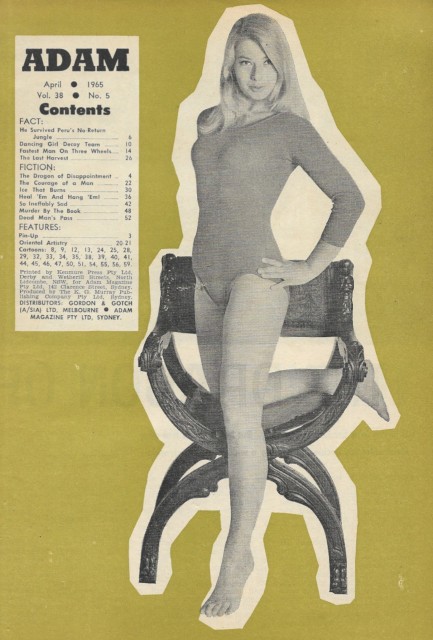 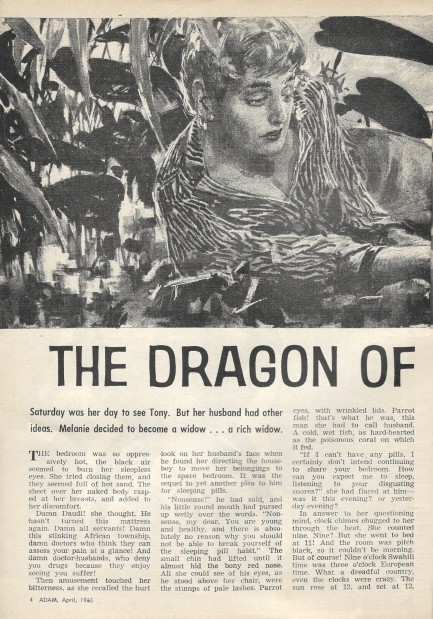 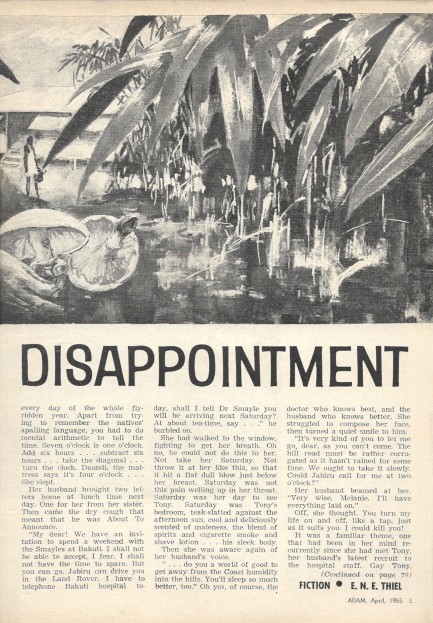 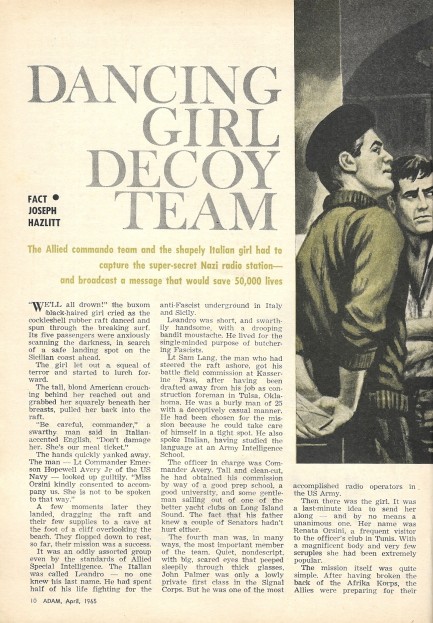 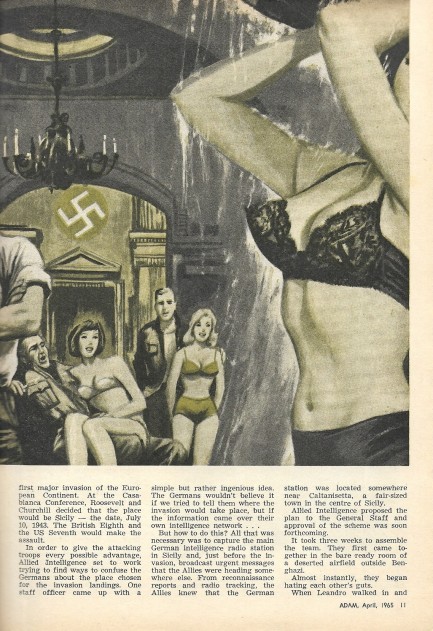 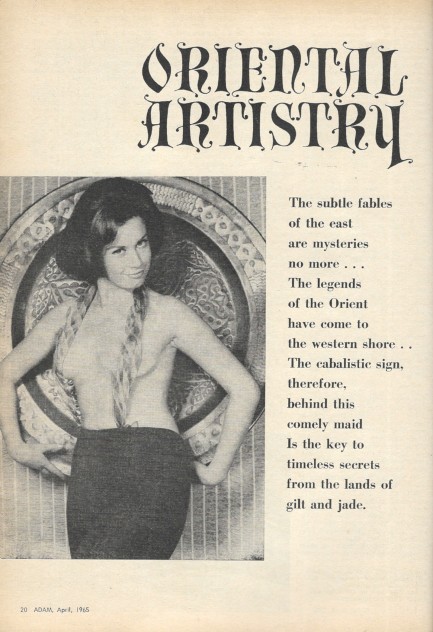  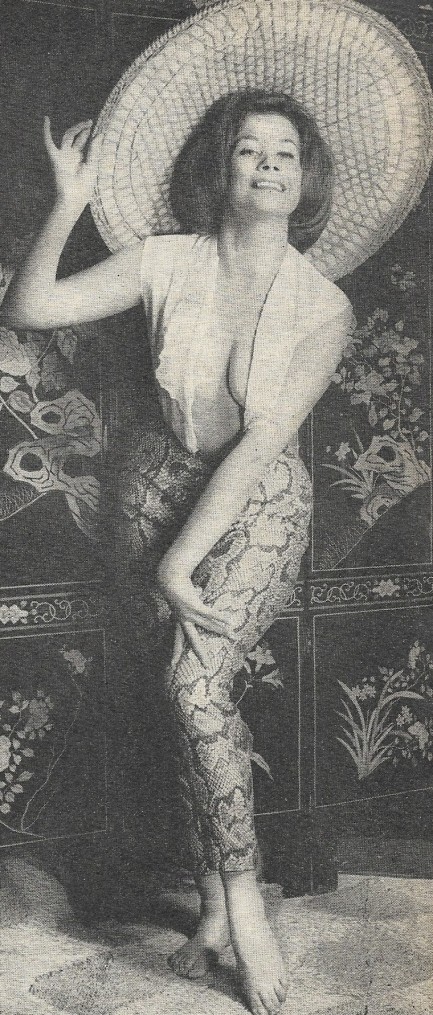 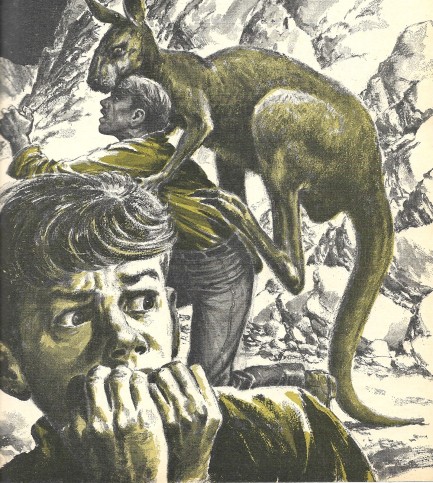 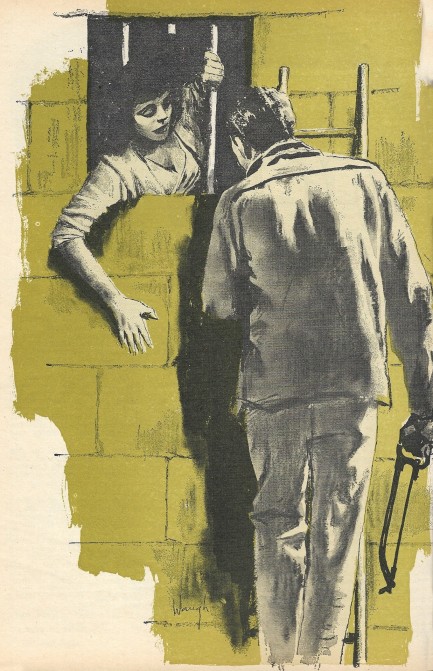 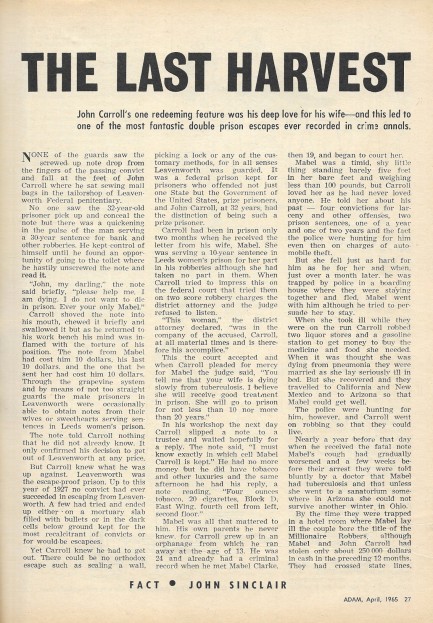 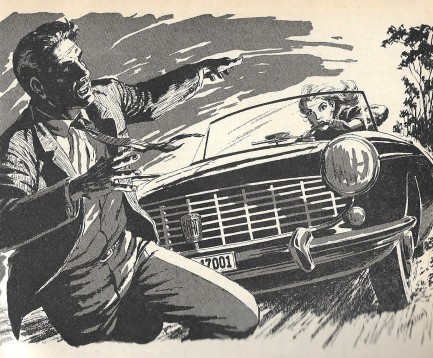 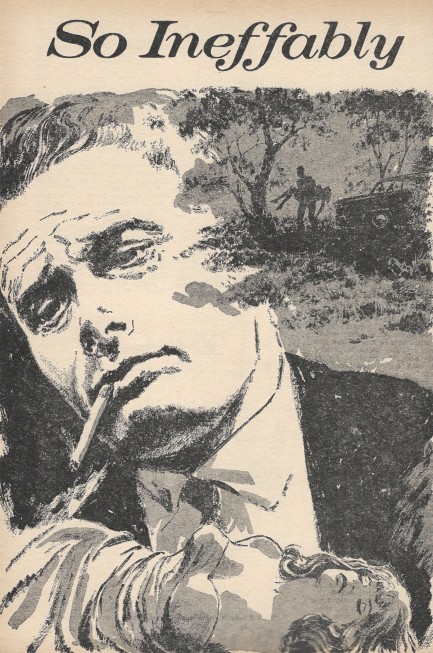 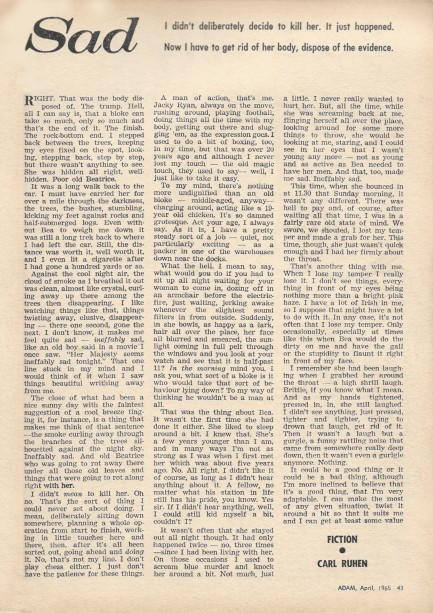 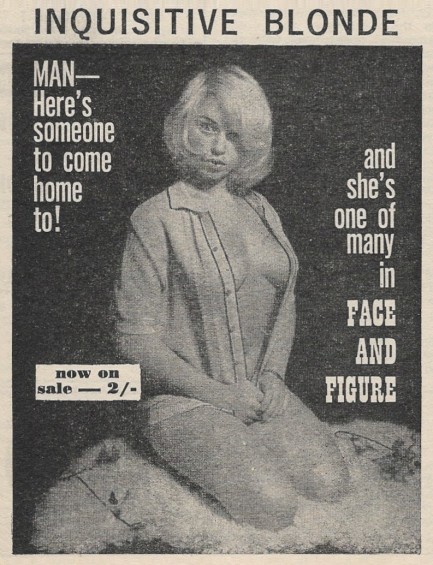
 Eight! Nine! Nine and a half! Nine and five-eighths! Get up! I'm bought off but I can't be obvious! You think I'm a Supreme Court justice or something? 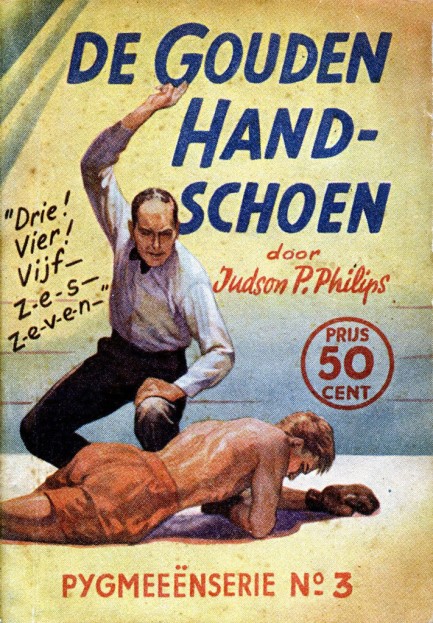
This Dutch paperback cover was painted by an unknown, but we love it. It fronts Judson P. Philips' De gouden handscheon. “Handschoen” is a pretty easy translation if you think literally—handshoe. But what the hell is a handshoe? *checking internet* In Dutch it means “glove.” Makes perfect sense. What do they call a condom? *checking internet* Sadly, it isn't “dickshoe.” Anyway, Philips was a pseudonym for Hugh Pentecost, and this was published by Uitgeverij de Combinatie in 1948.
Update: Same day update, actually, which should give you an idea how much time we spend poking around for information. Turns out the above cover was adapted from a 1936 issue of the pulp magazine Argosy. The art is signed by John A. Coughlin. Also note that Judson P. Philips has a story in the issue. That leads to the reasonable conclusion that De gouden handschoen is a Dutch translation of that story typeset to paperback length.

|
 |

The headlines that mattered yesteryear.
2003—Hope Dies
Film legend Bob Hope dies of pneumonia two months after celebrating his 100th birthday. 1945—Churchill Given the Sack
In spite of admiring Winston Churchill as a great wartime leader, Britons elect
Clement Attlee the nation's new prime minister in a sweeping victory for the Labour Party over the Conservatives. 1952—Evita Peron Dies
Eva Duarte de Peron, aka Evita, wife of the president of the Argentine Republic, dies from cancer at age 33. Evita had brought the working classes into a position of political power never witnessed before, but was hated by the nation's powerful military class. She is lain to rest in Milan, Italy in a secret grave under a nun's name, but is eventually returned to Argentina for reburial beside her husband in 1974. 1943—Mussolini Calls It Quits
Italian dictator Benito Mussolini steps down as head of the armed forces and the government. It soon becomes clear that Il Duce did not relinquish power voluntarily, but was forced to resign after former Fascist colleagues turned against him. He is later installed by Germany as leader of the Italian Social Republic in the north of the country, but is killed by partisans in 1945.
|

|
|

It's easy. We have an uploader that makes it a snap. Use it to submit your art, text, header, and subhead. Your post can be funny, serious, or anything in between, as long as it's vintage pulp. You'll get a byline and experience the fleeting pride of free authorship. We'll edit your post for typos, but the rest is up to you. Click here to give us your best shot.

|
|

























































































































































































































